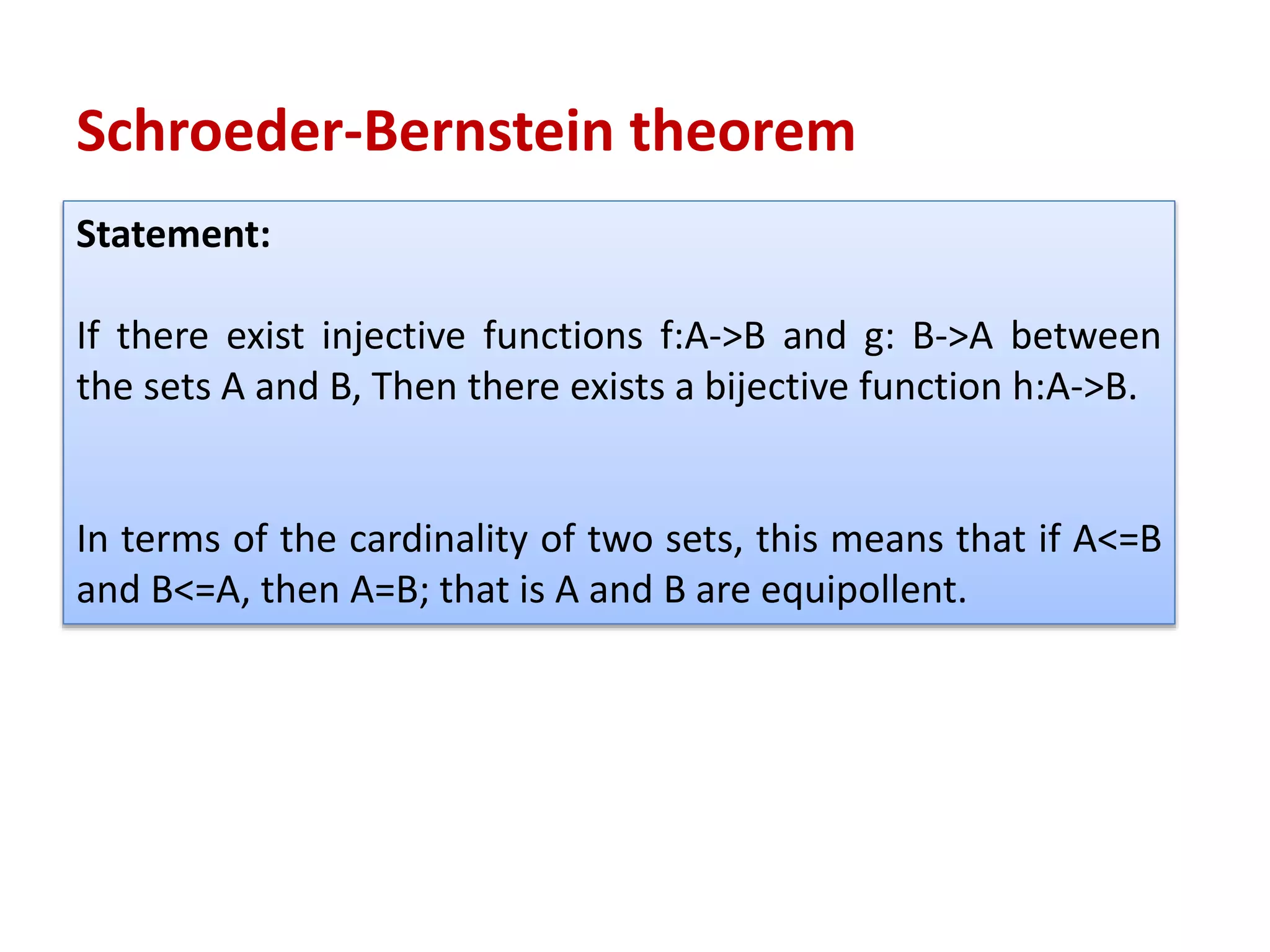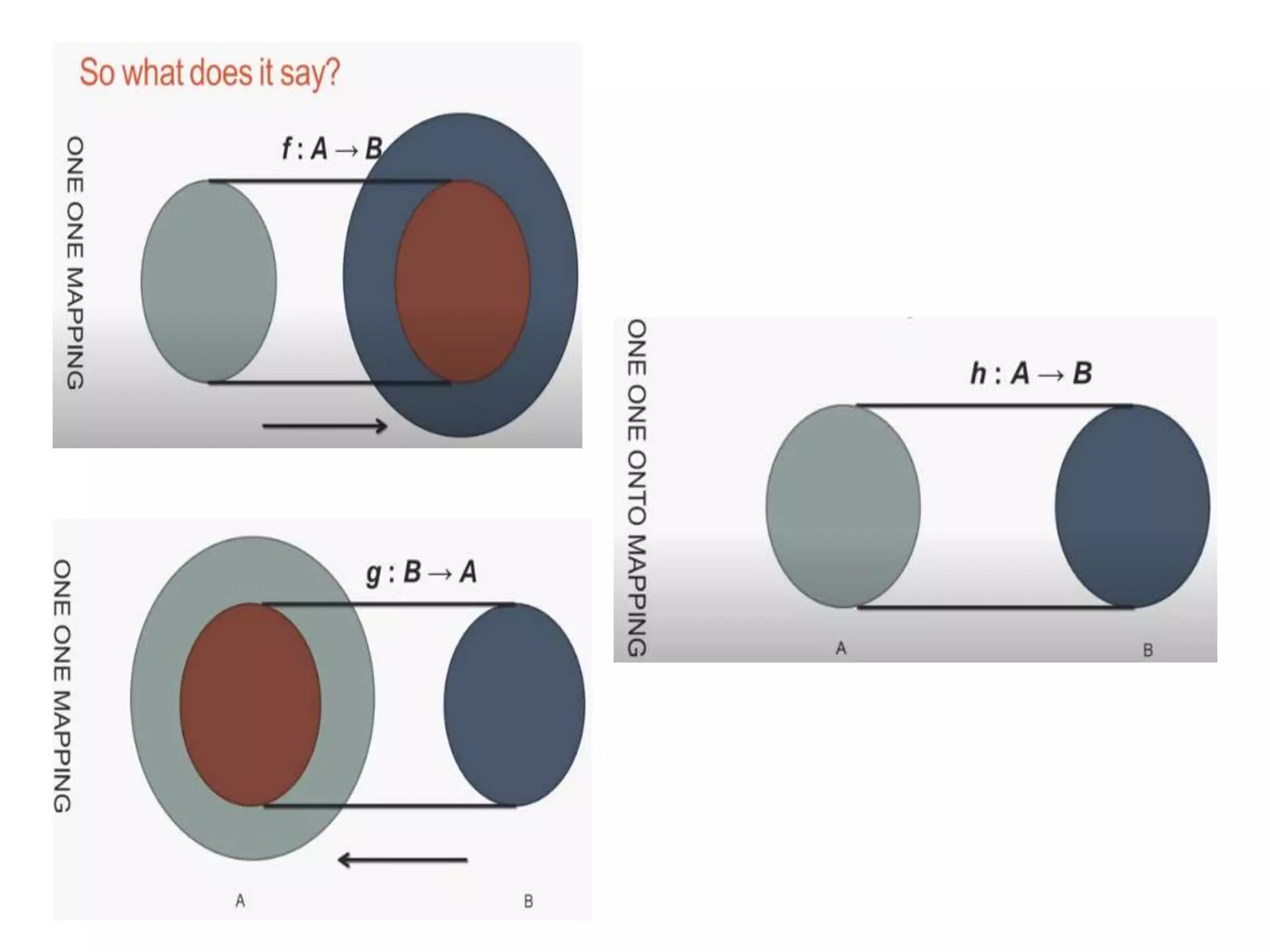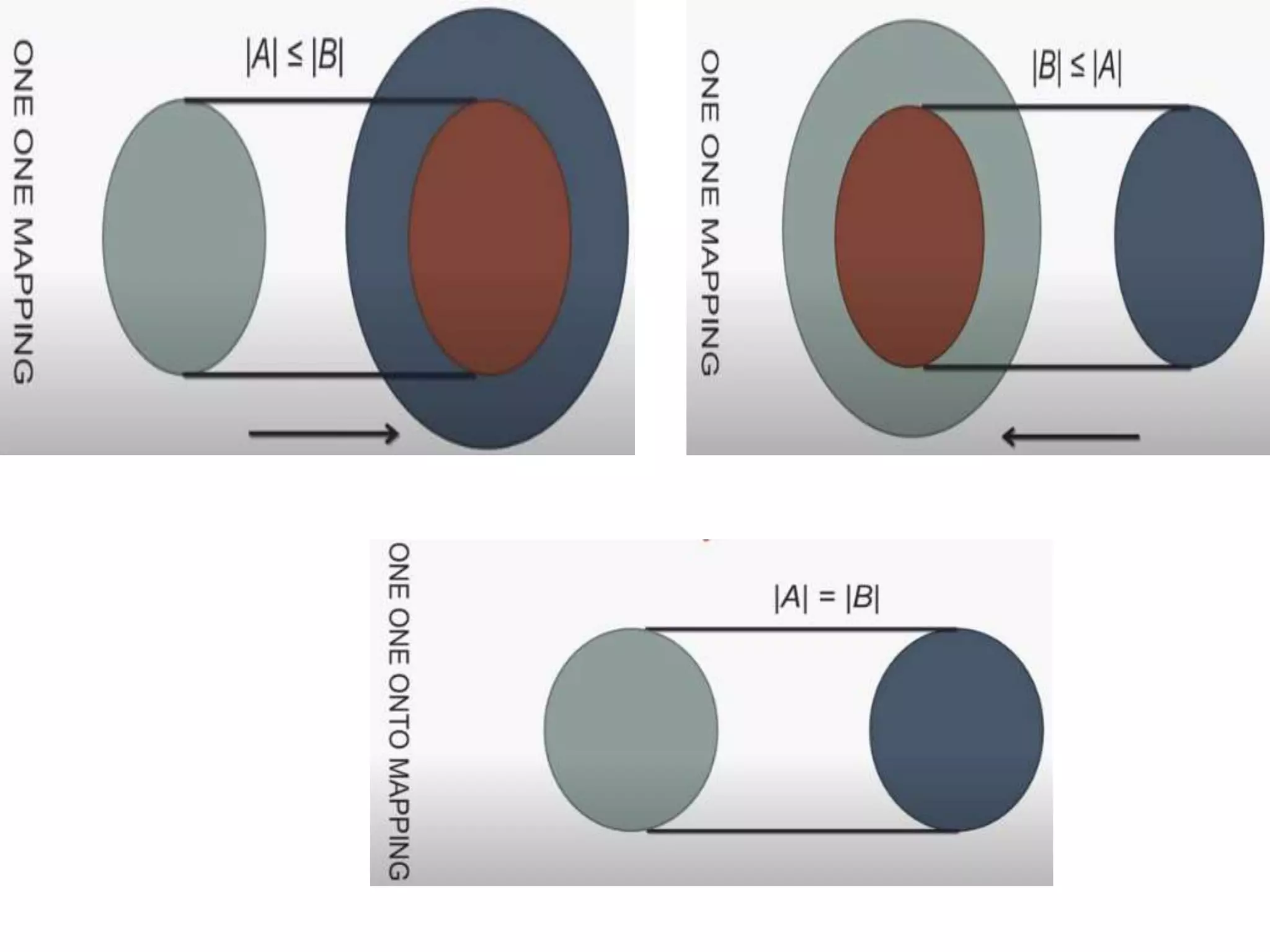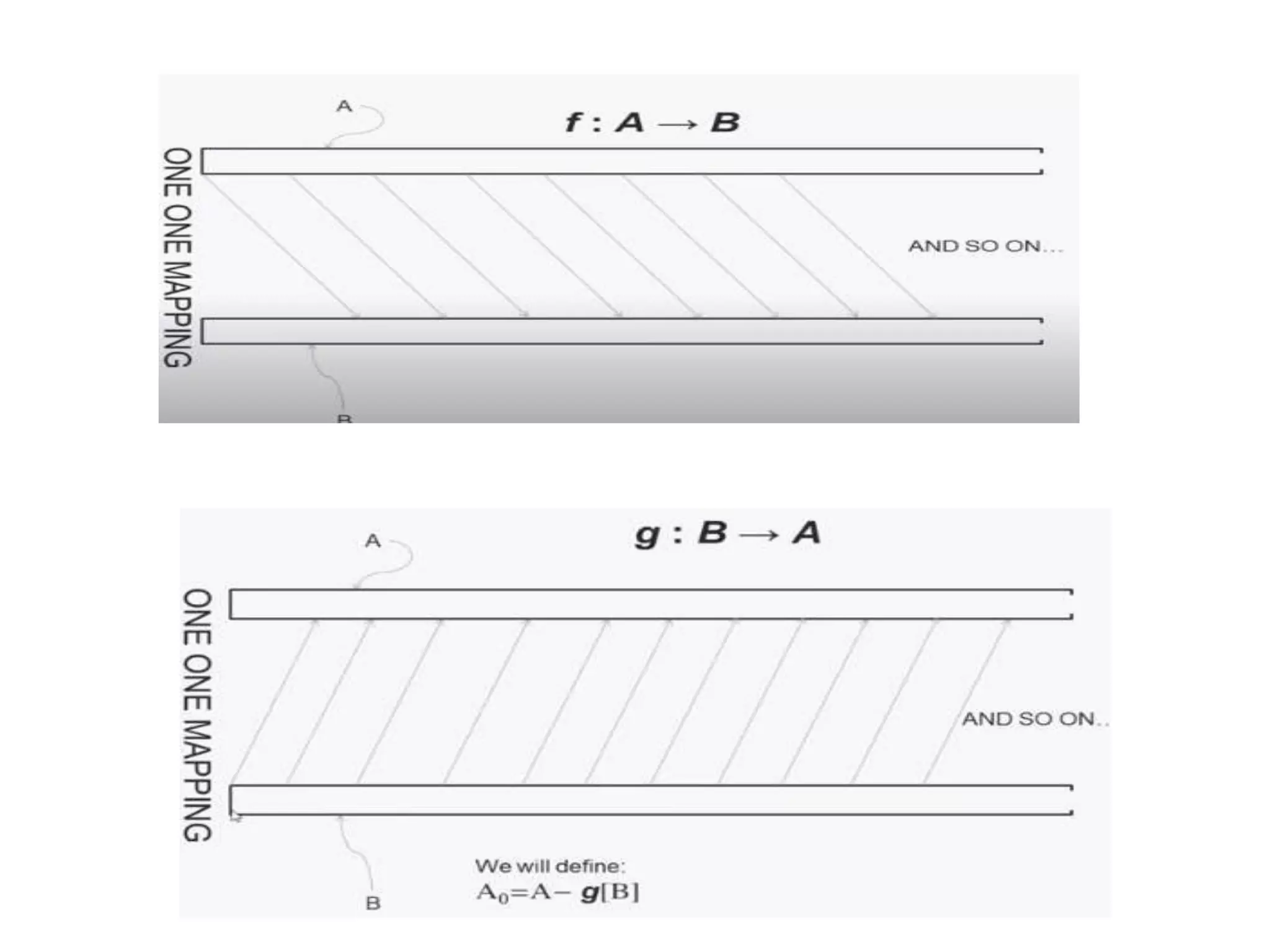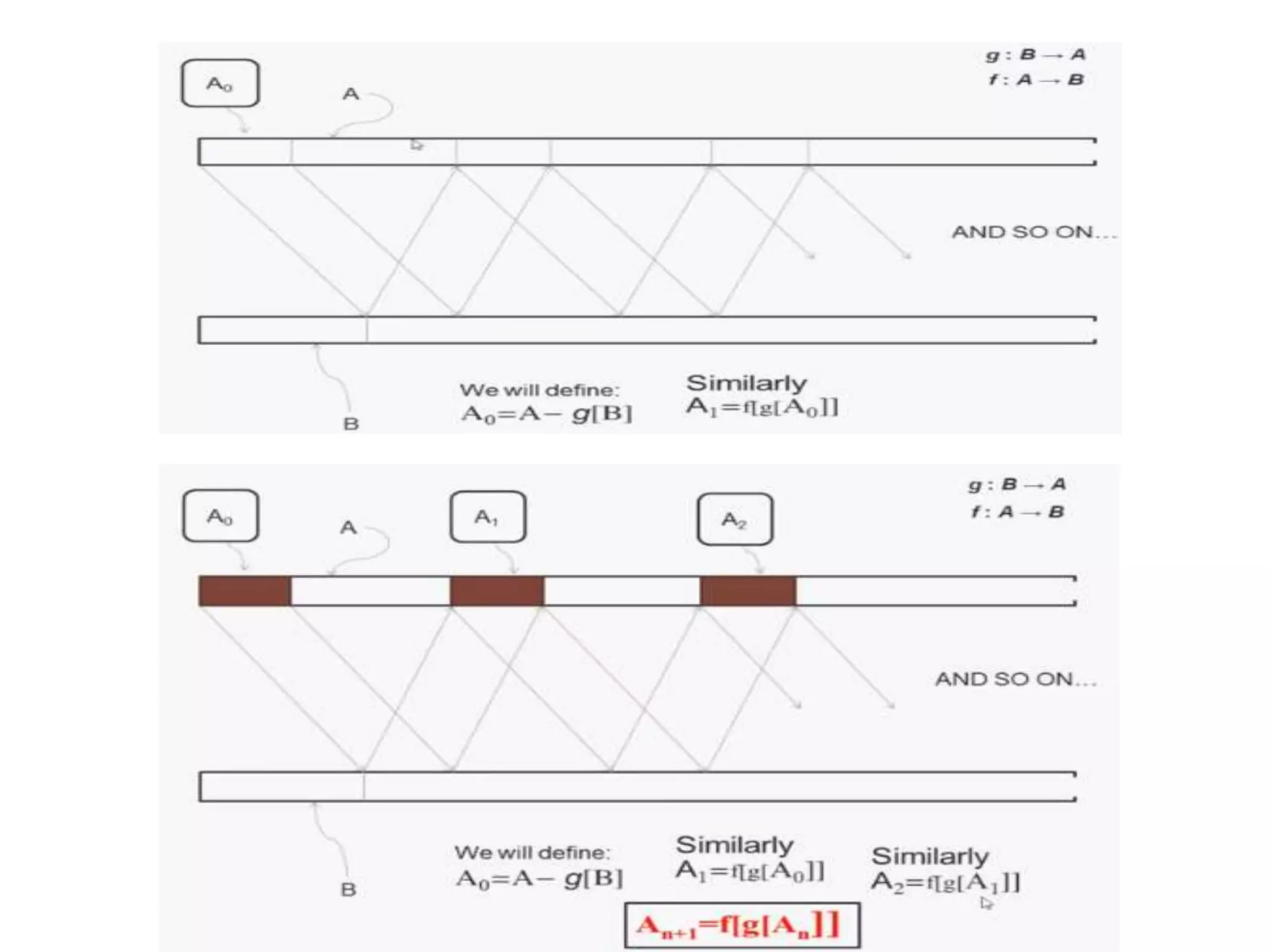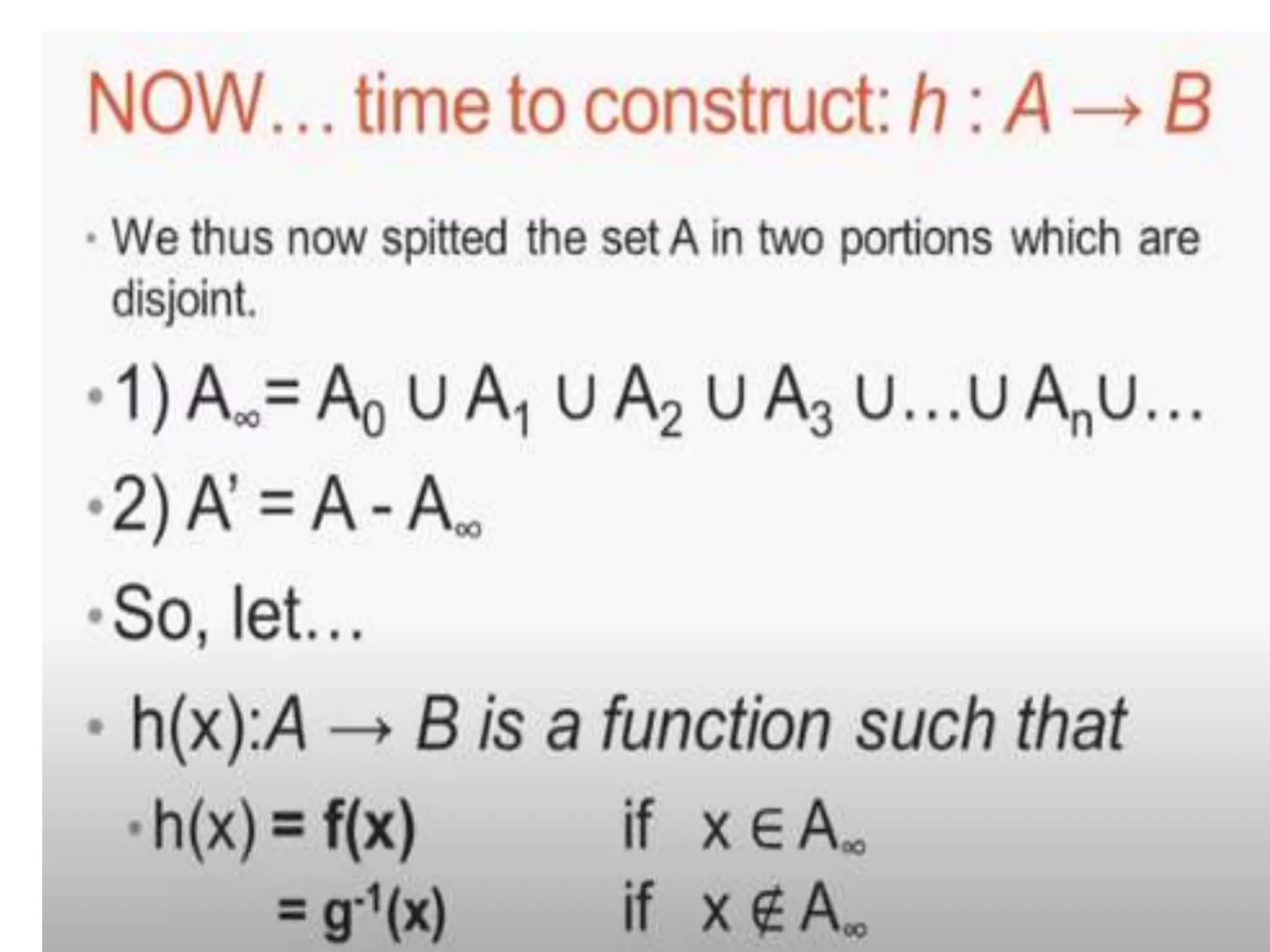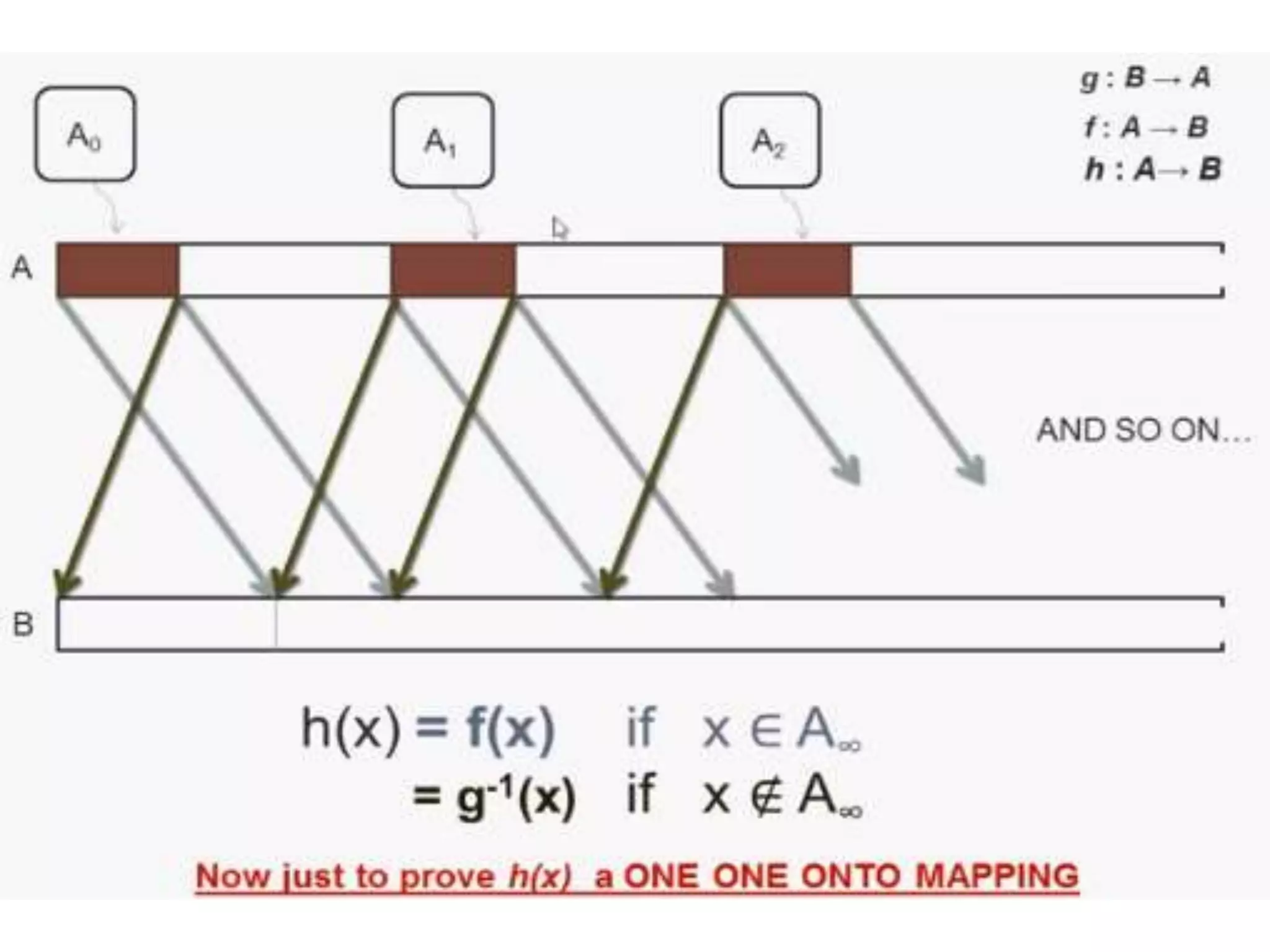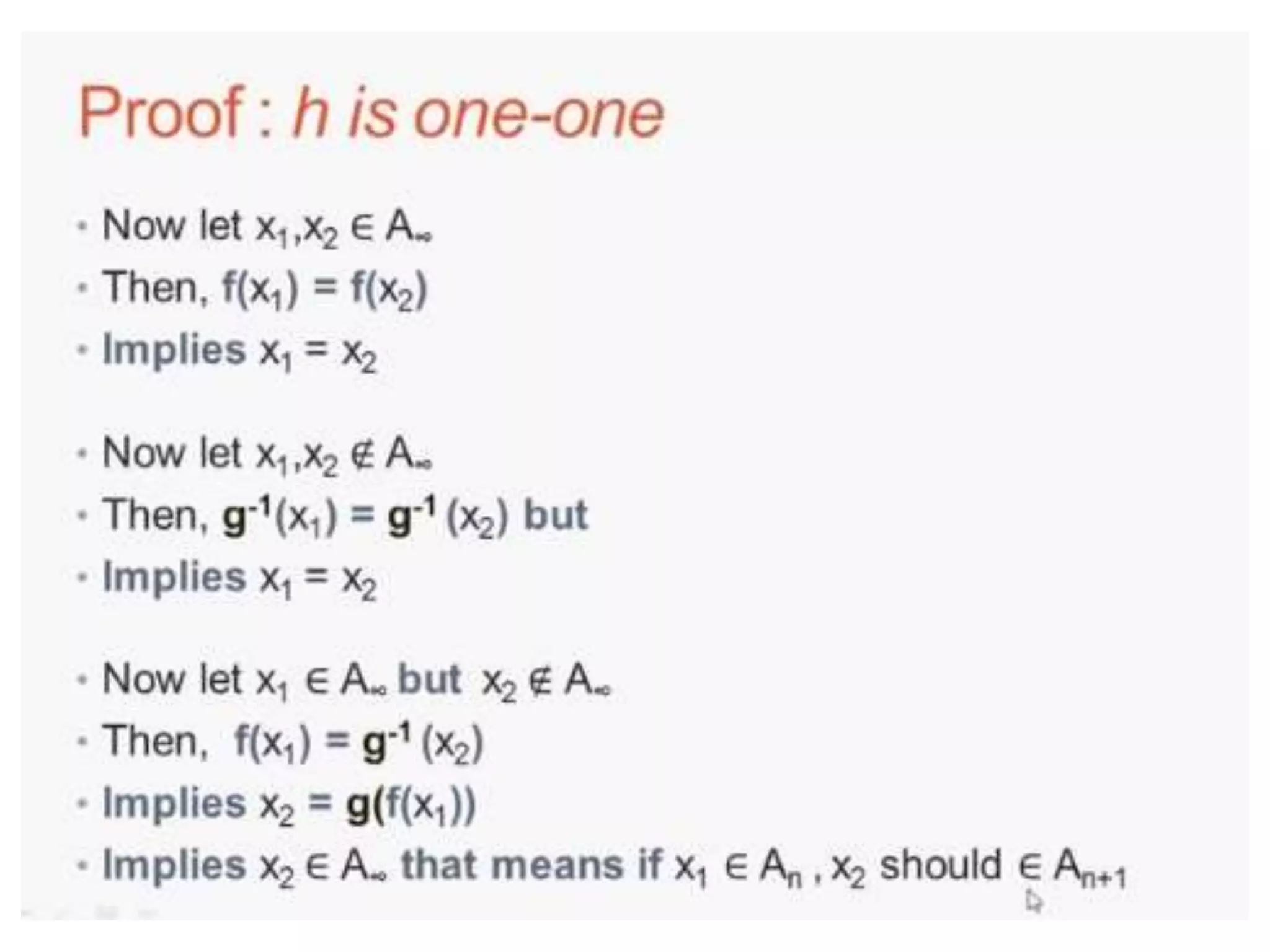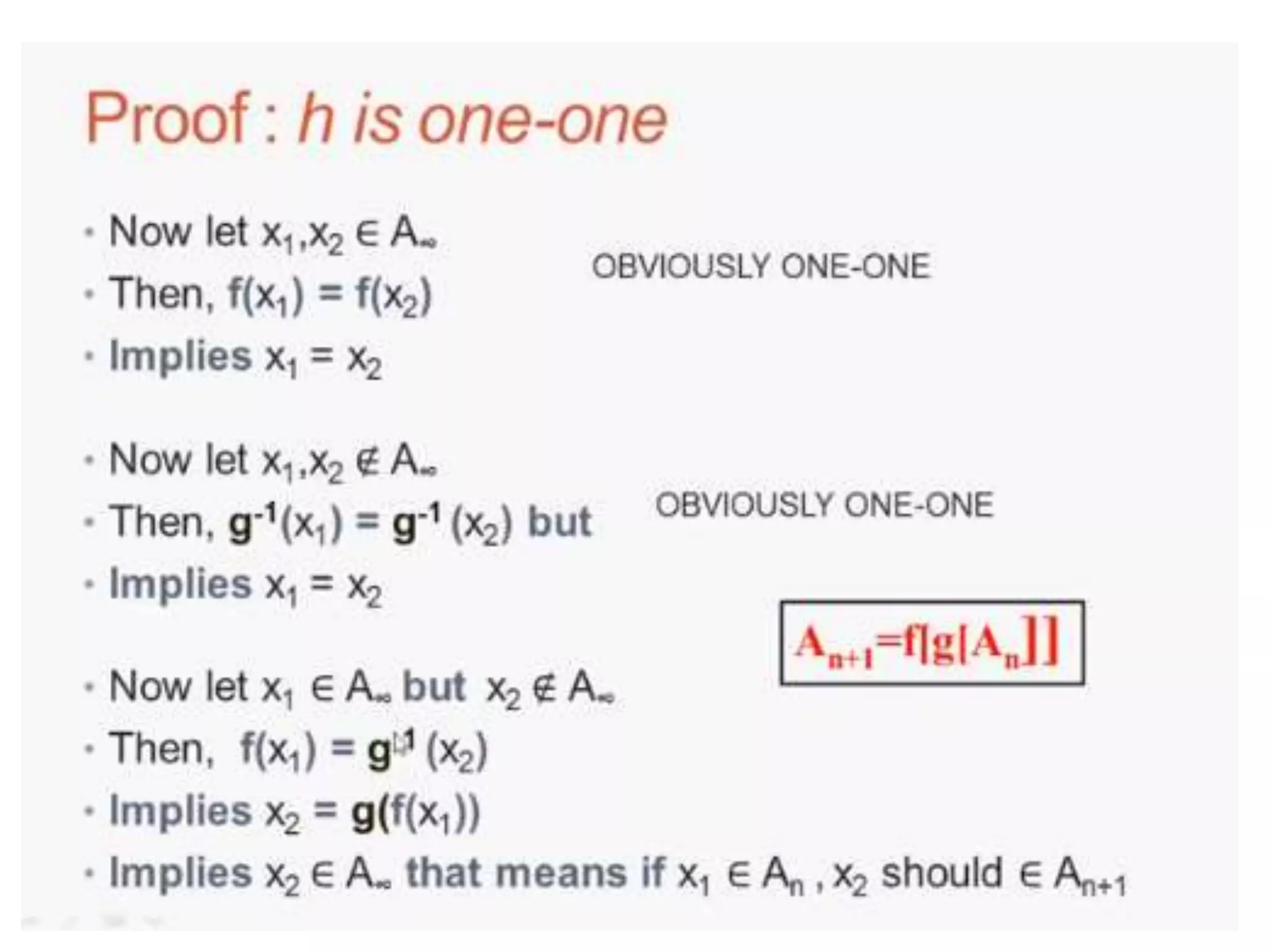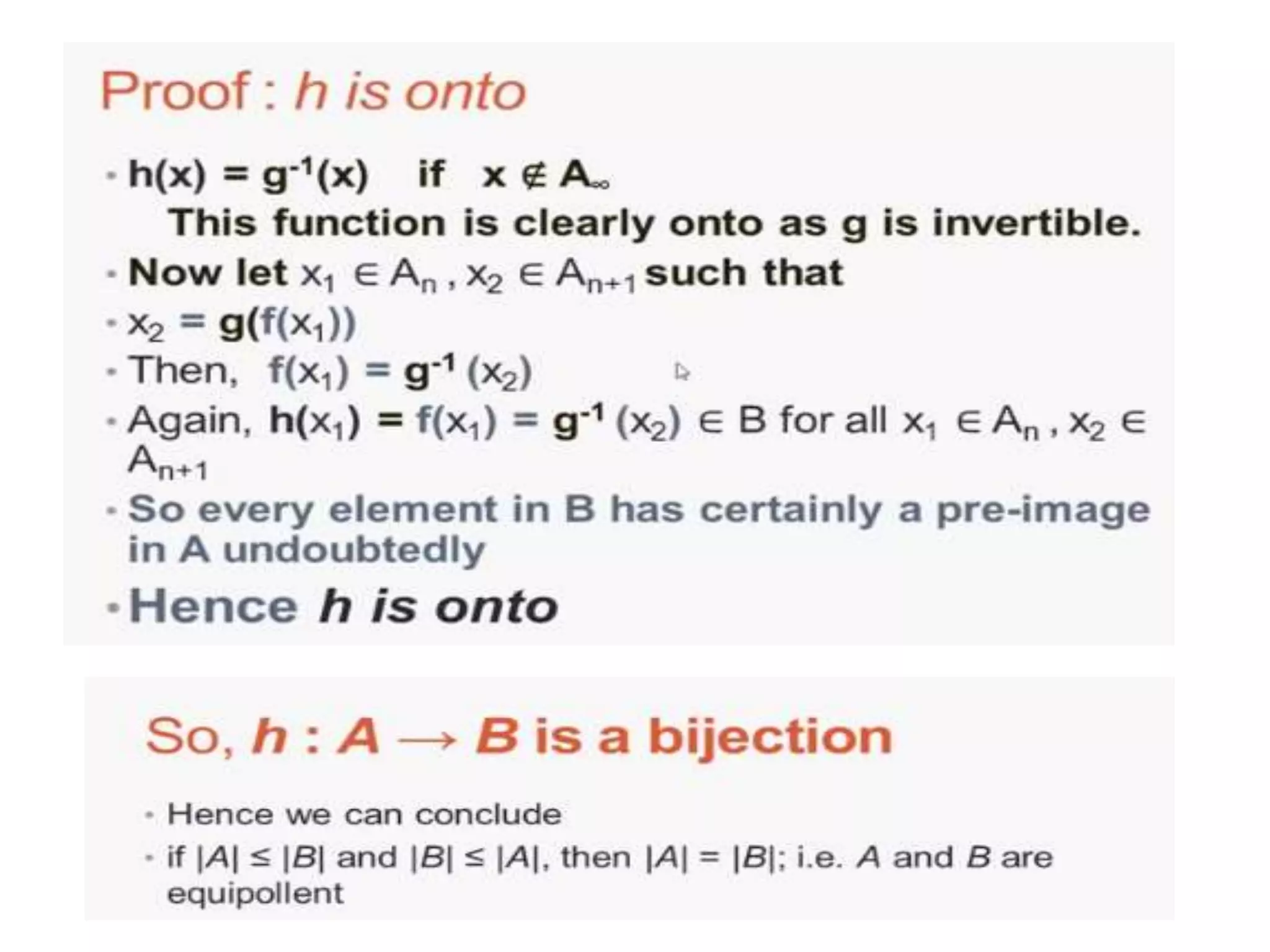The document discusses the key topics in discrete mathematics that will be covered across 5 units. Unit 1 covers sets, relations, functions and their properties. Unit 2 discusses mathematical induction, counting techniques, and number theory topics. Unit 3 is on propositional logic, logical equivalence and proof techniques. Unit 4 covers algebraic structures like groups, rings and fields. Unit 5 is about graphs, trees, and their properties like coloring and shortest paths. The document also lists 3 recommended textbooks for the course.
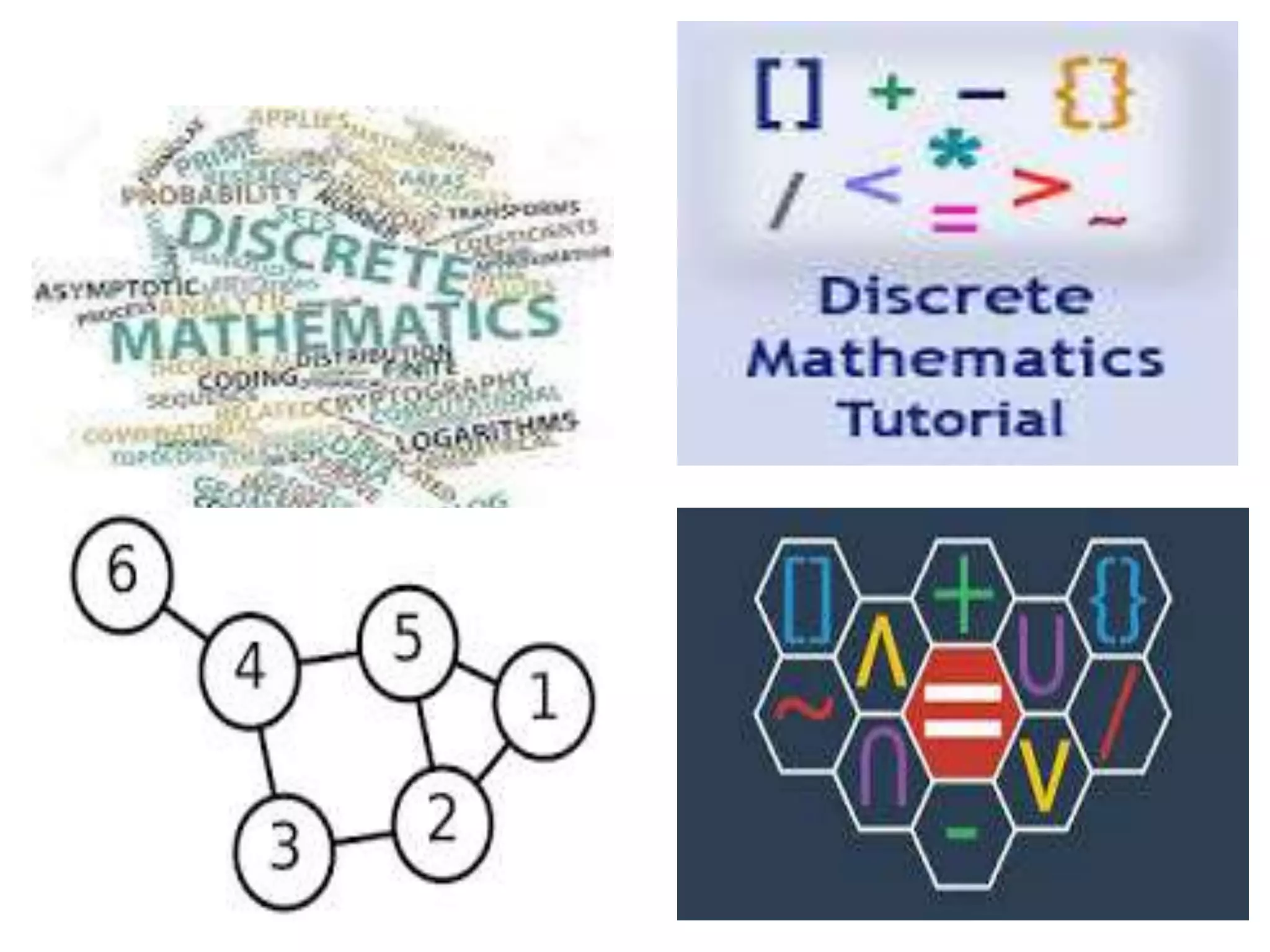

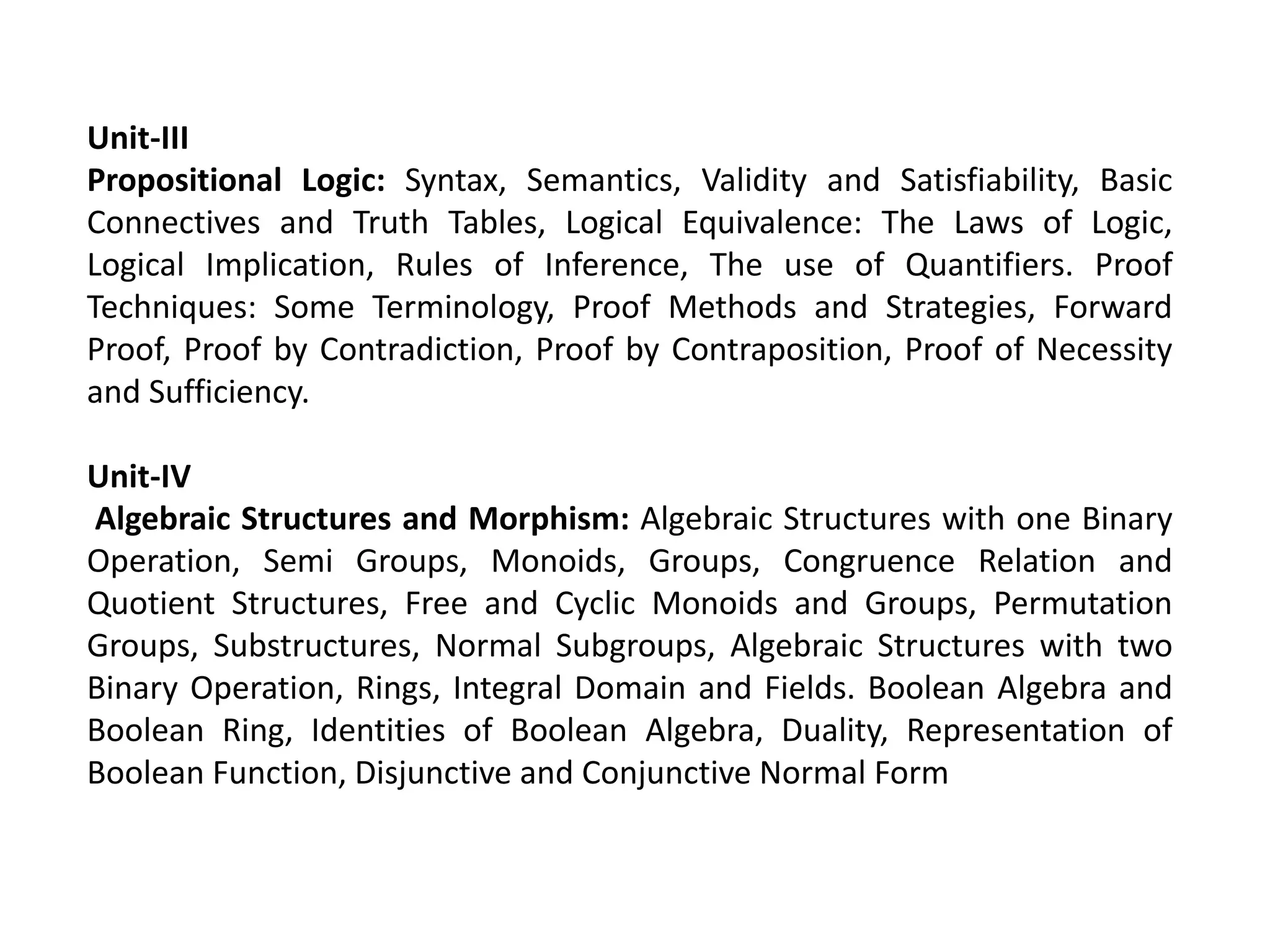
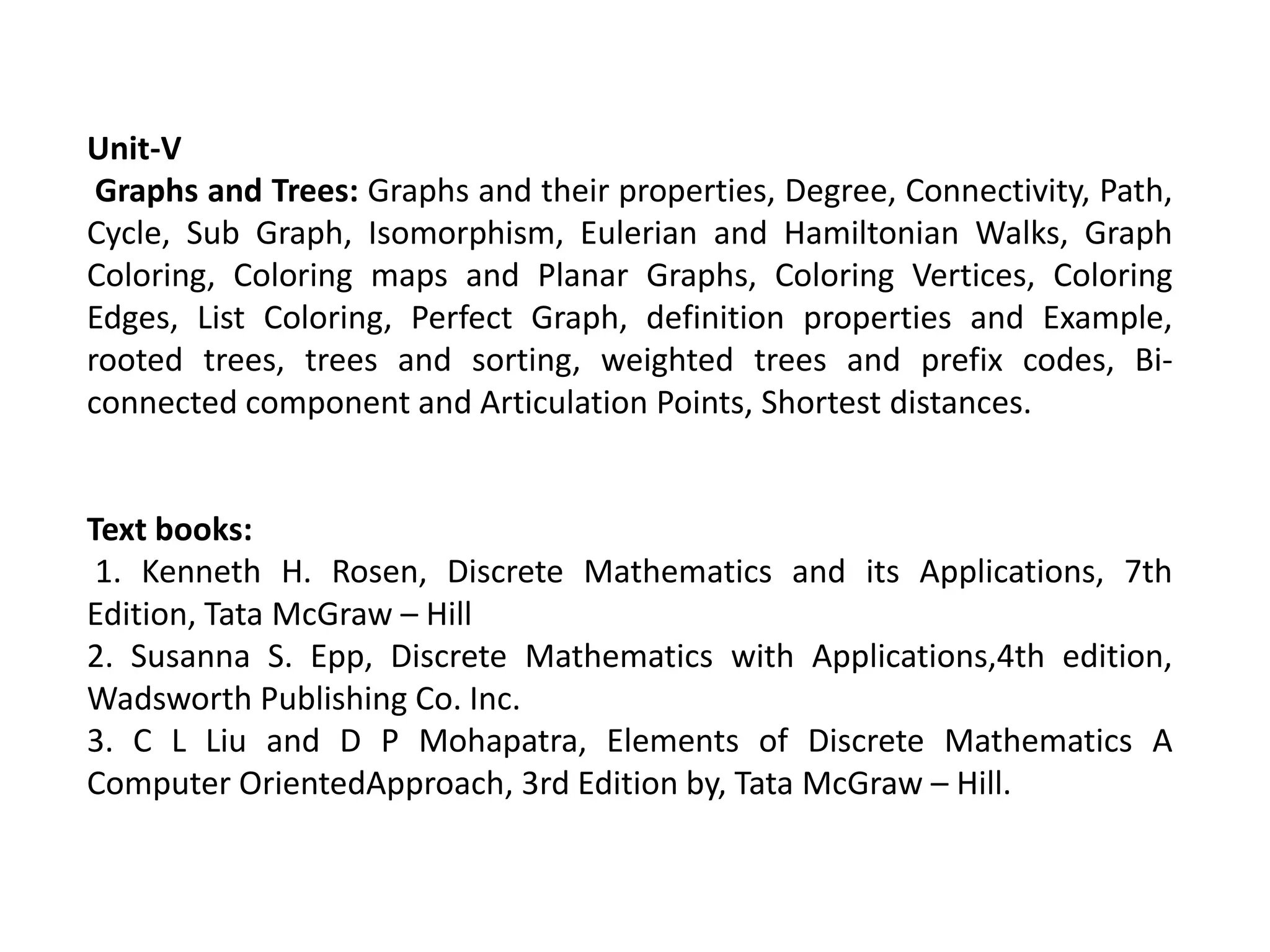
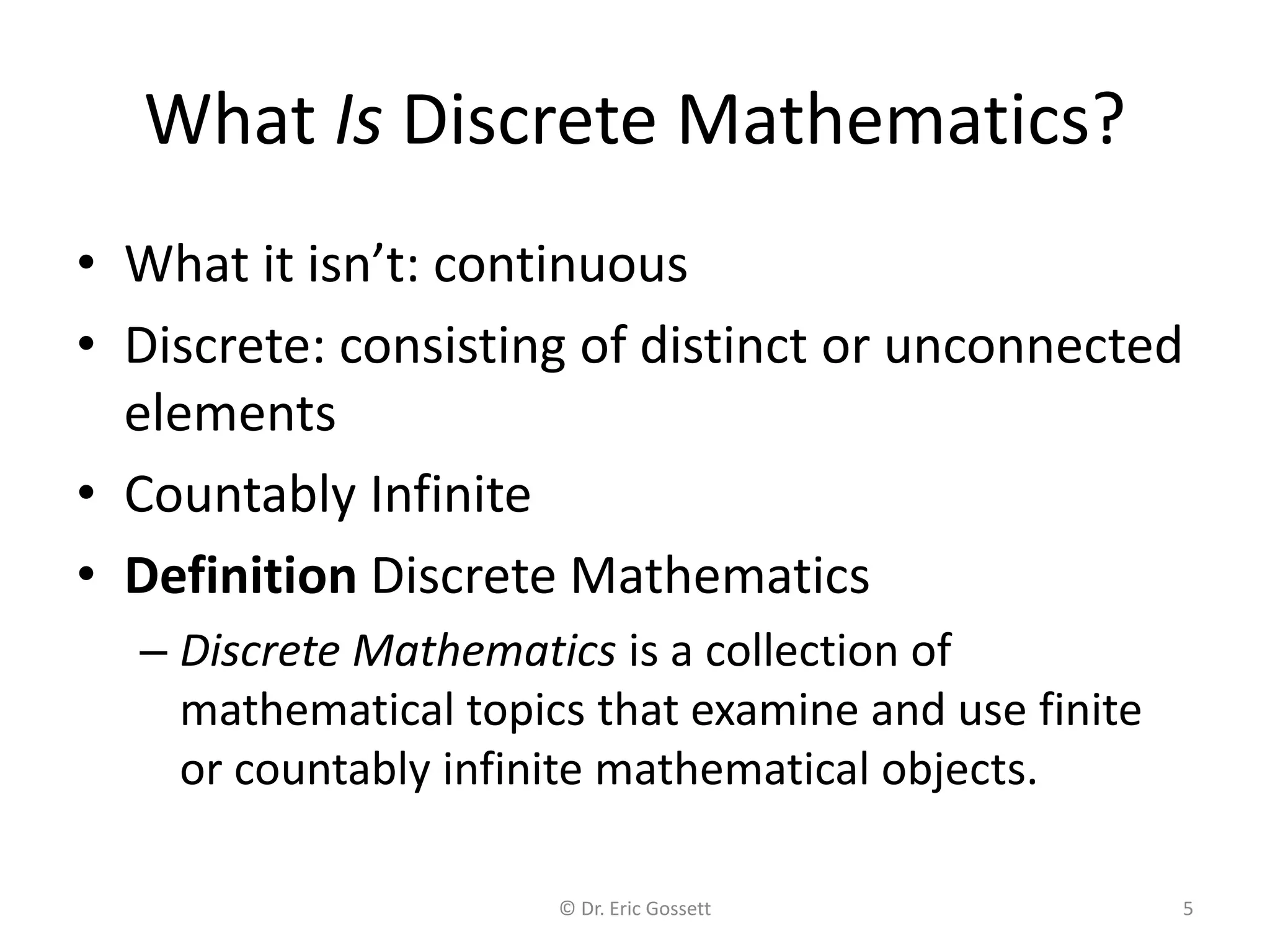
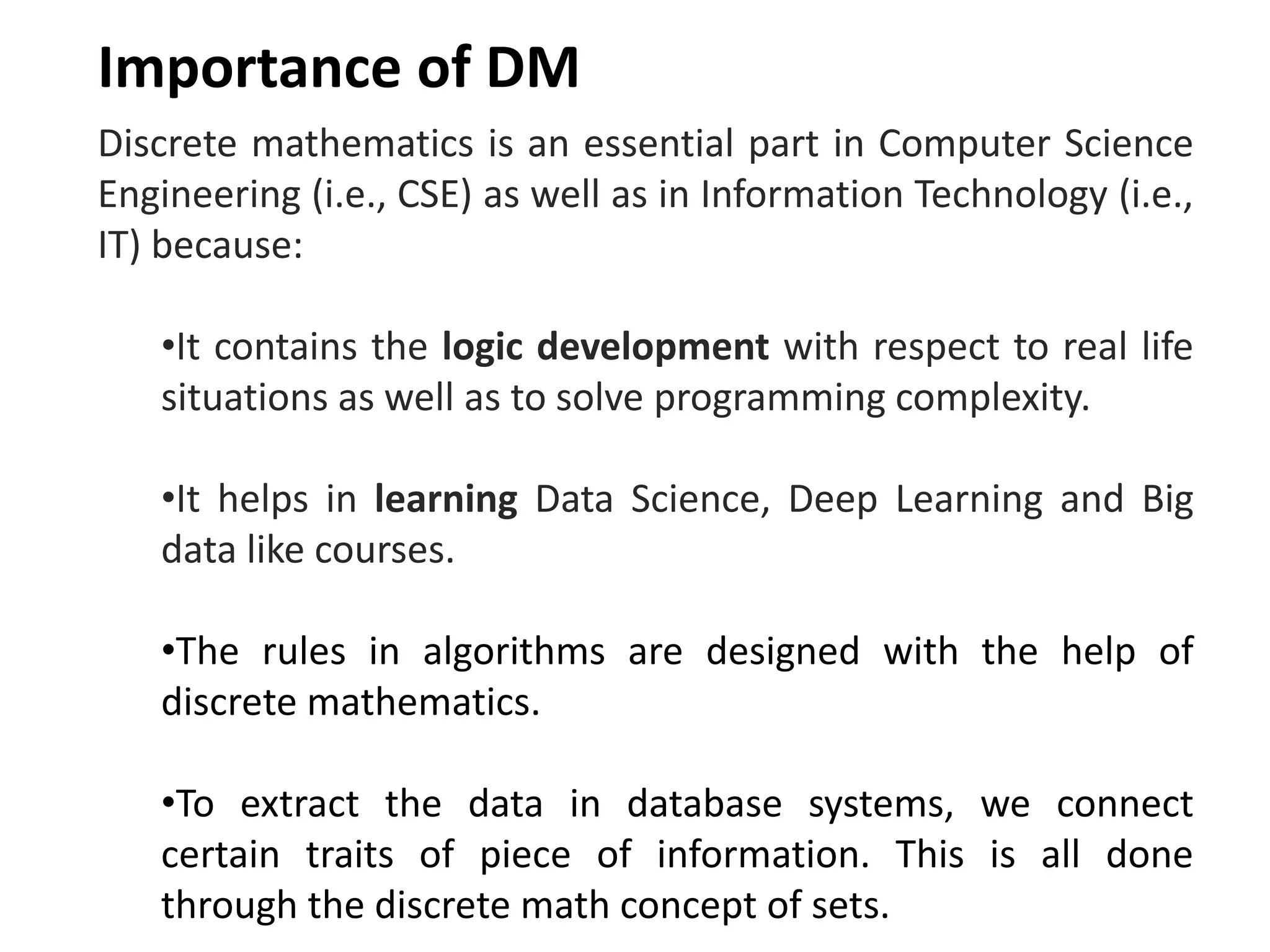

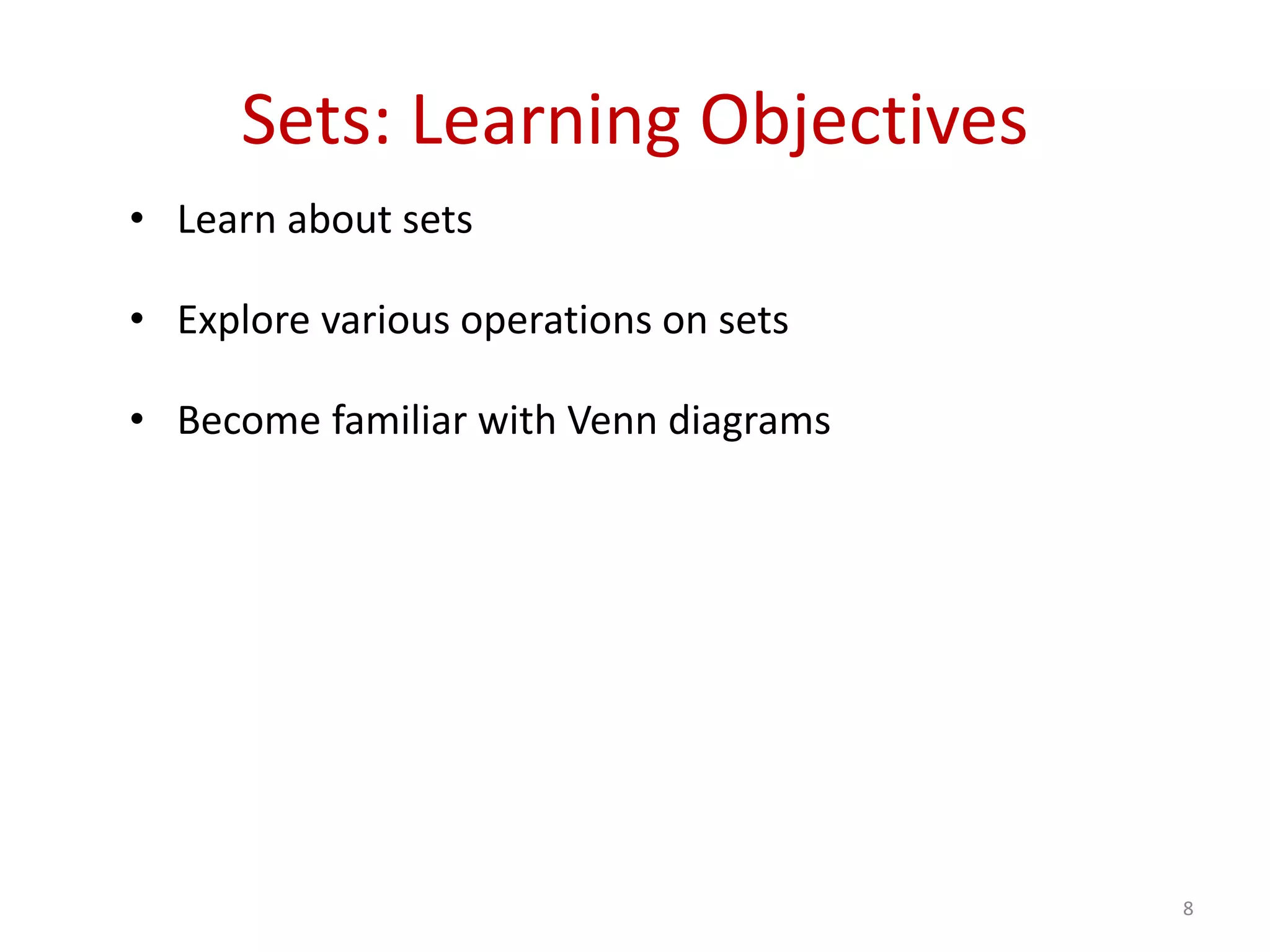
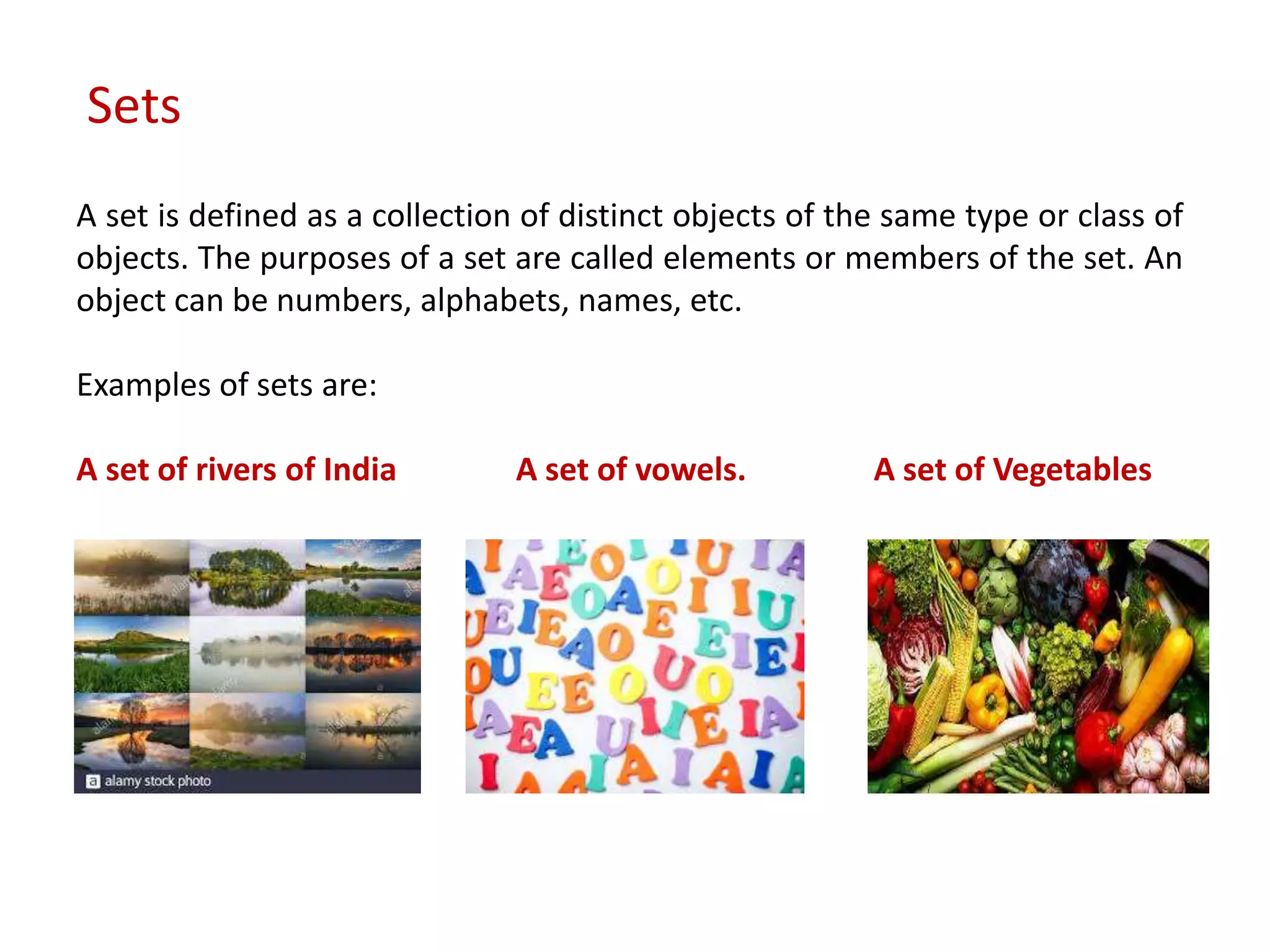

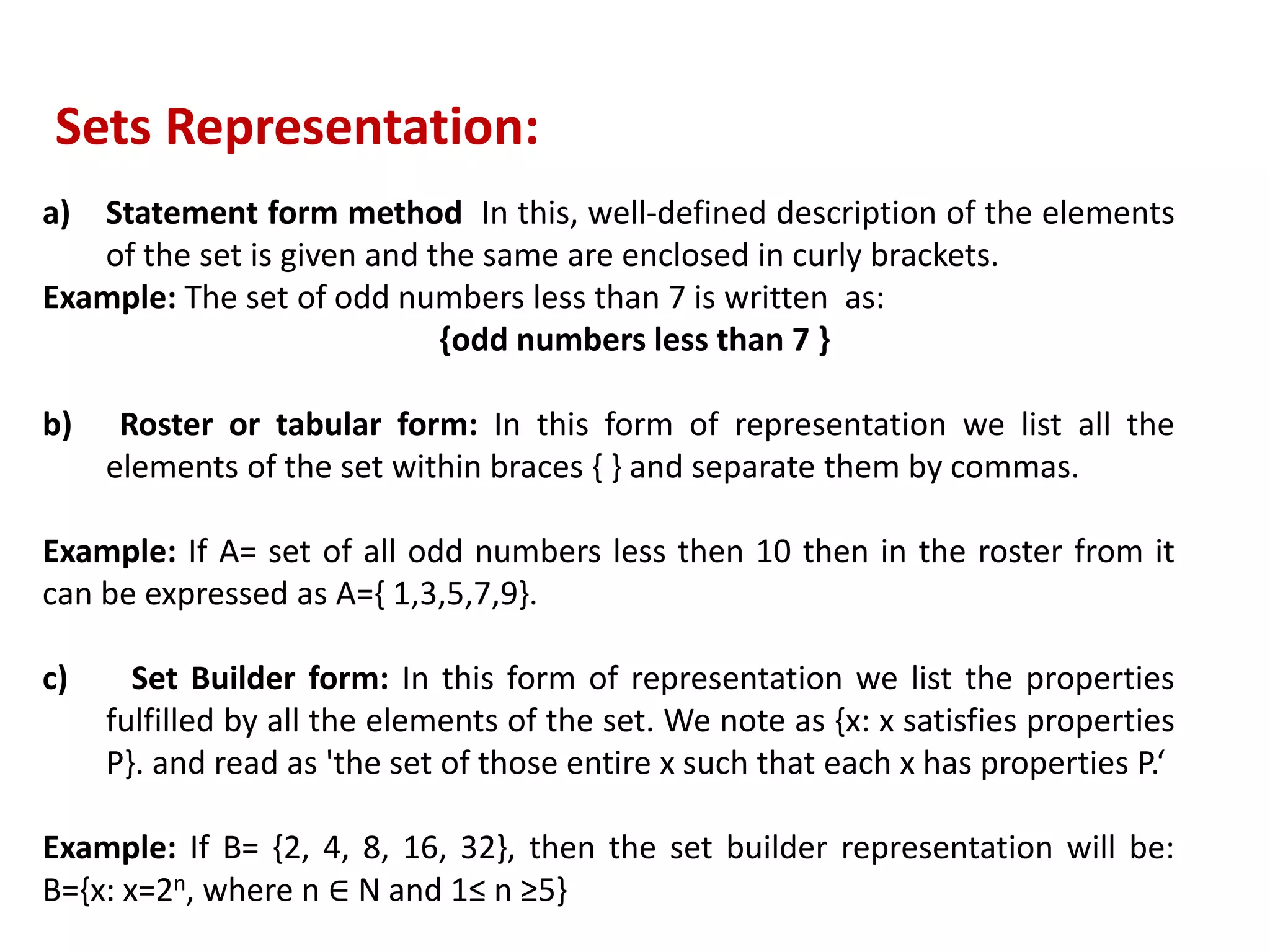
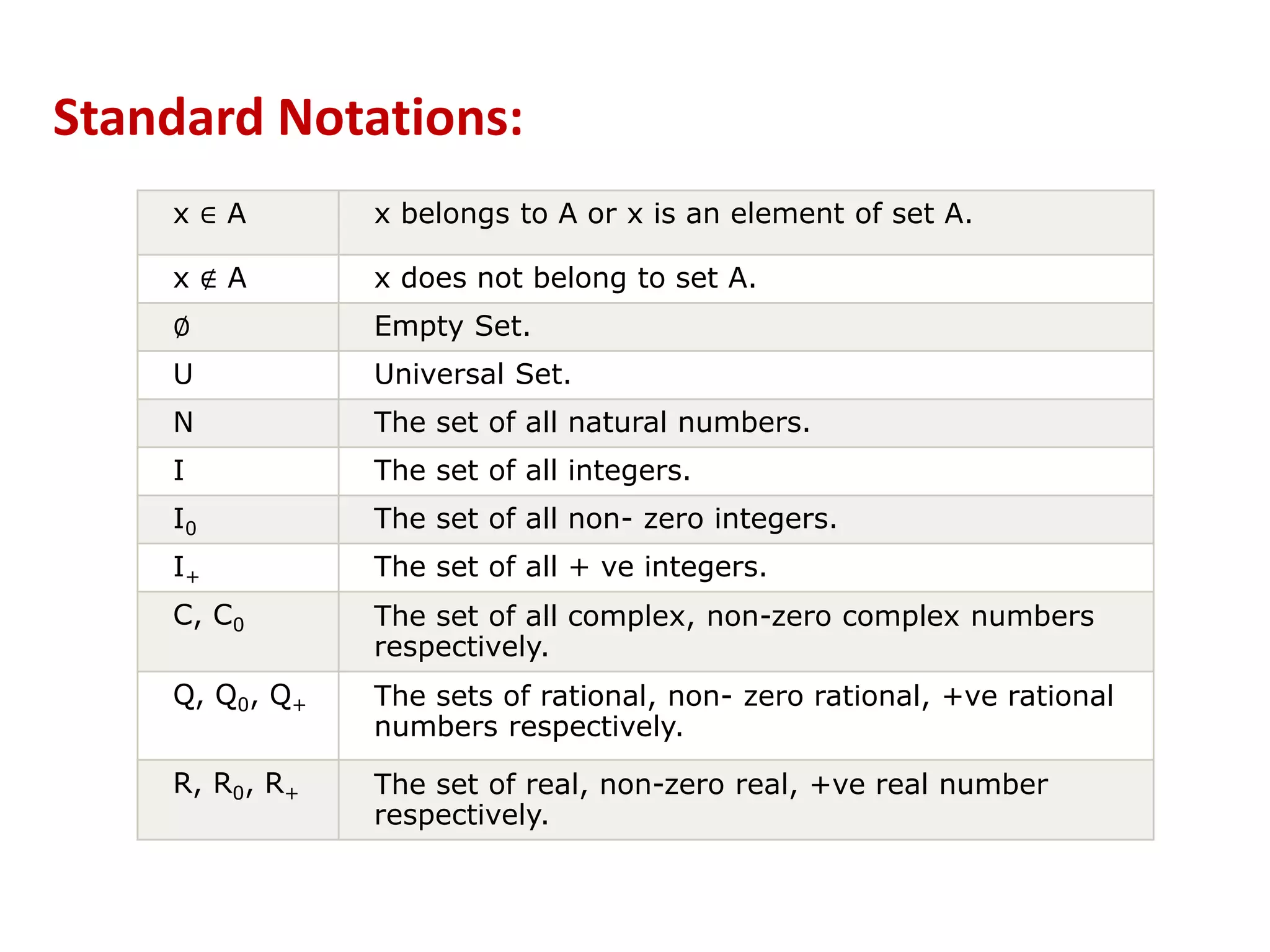
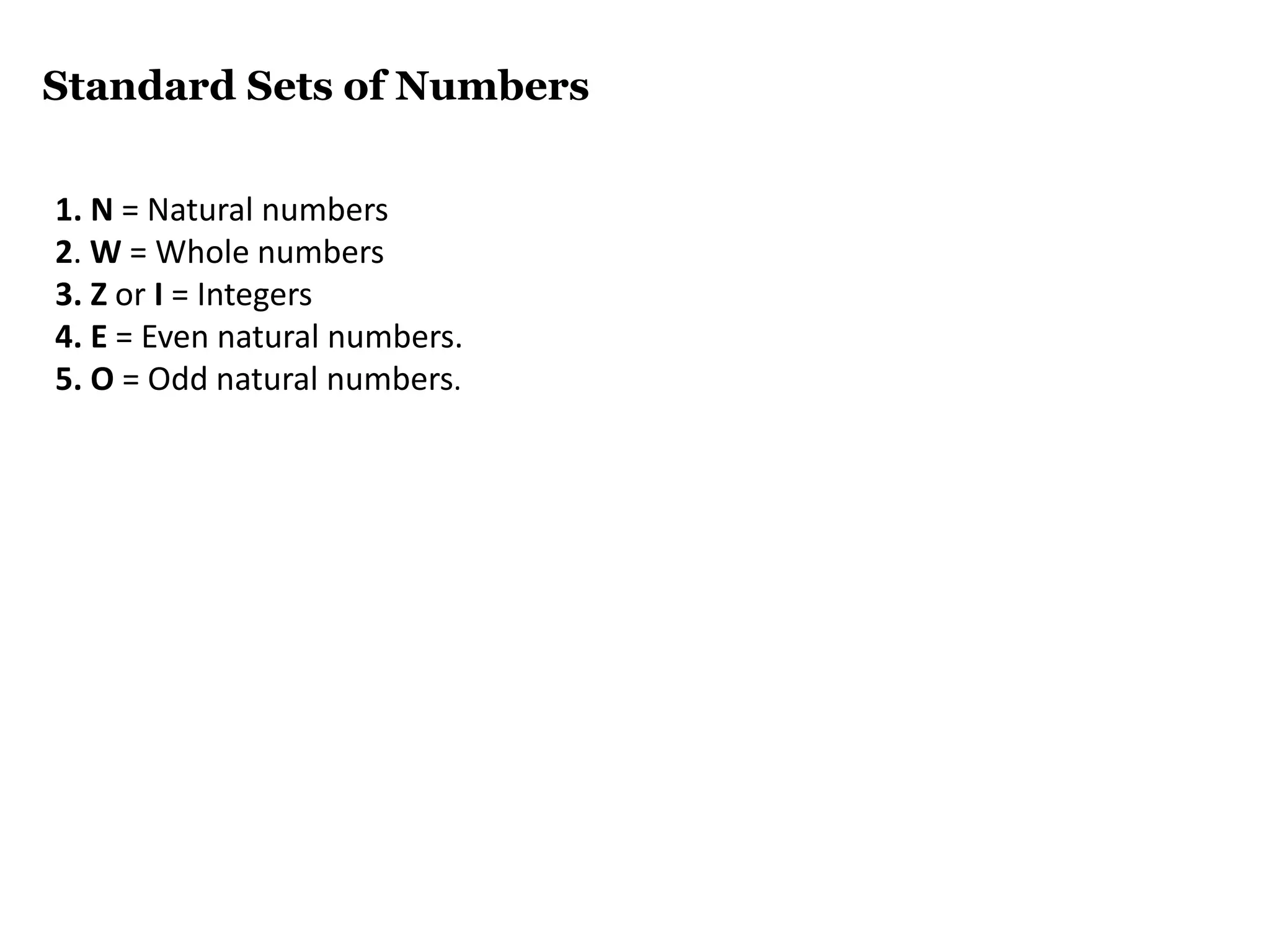
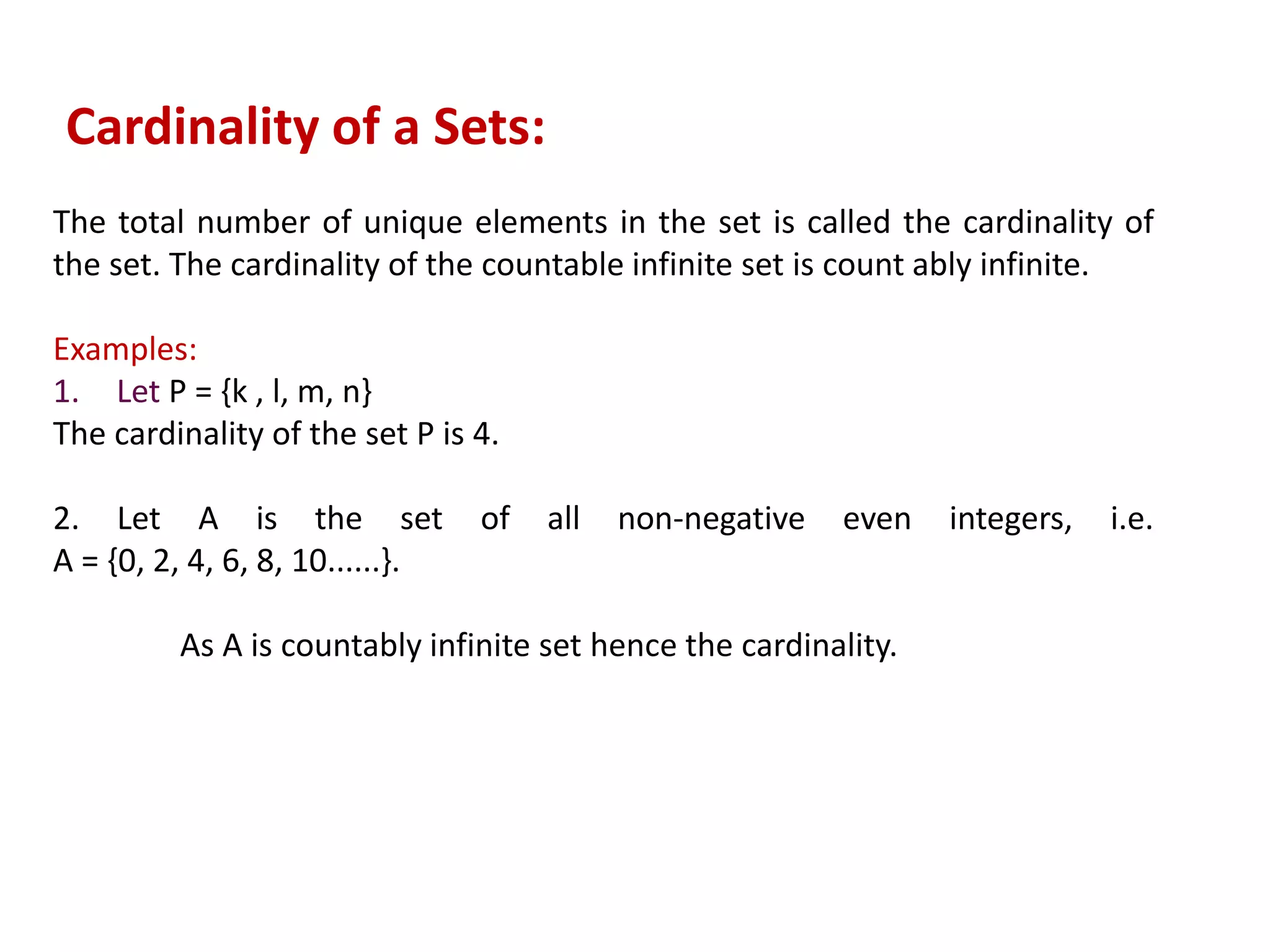
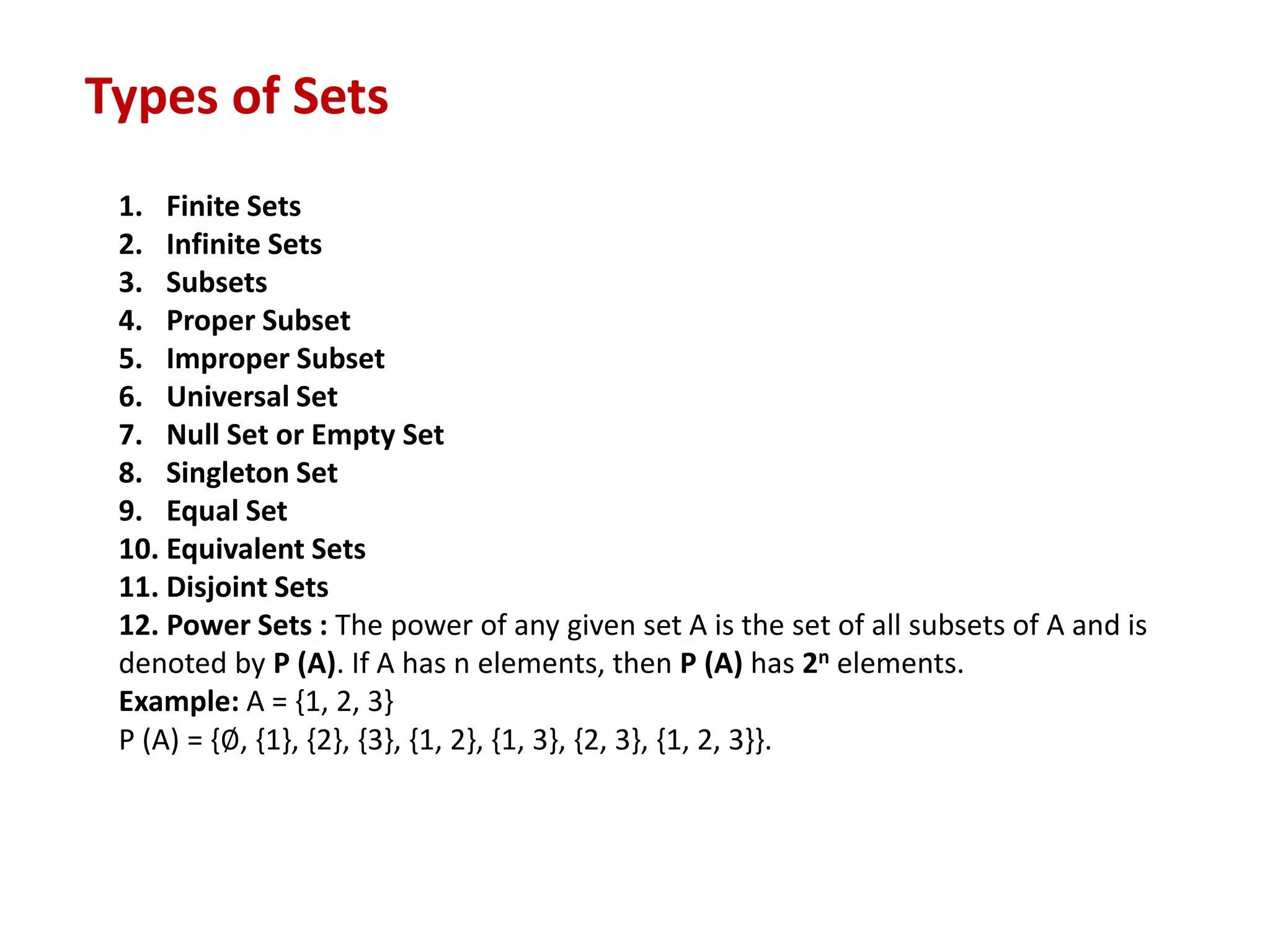
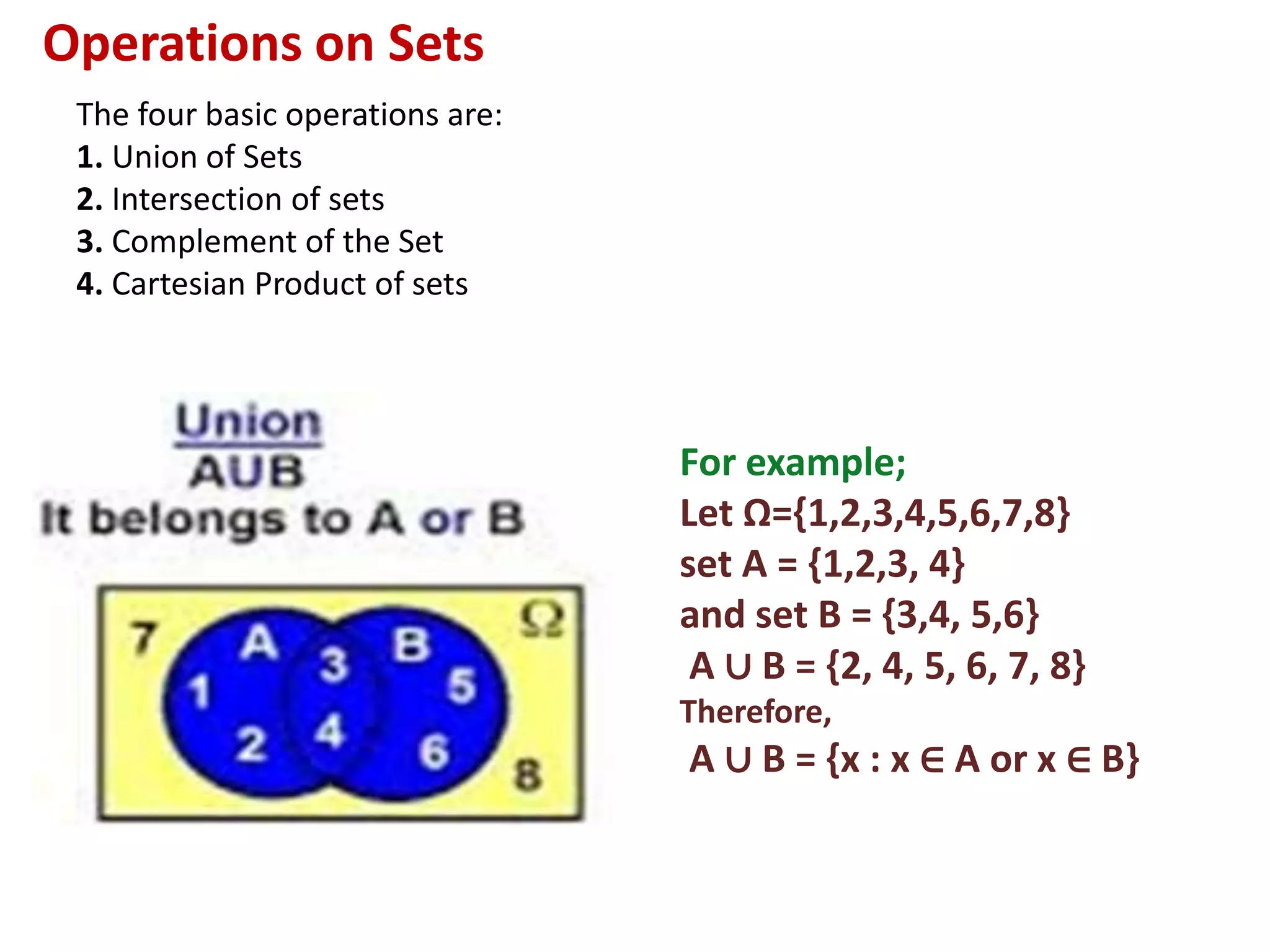

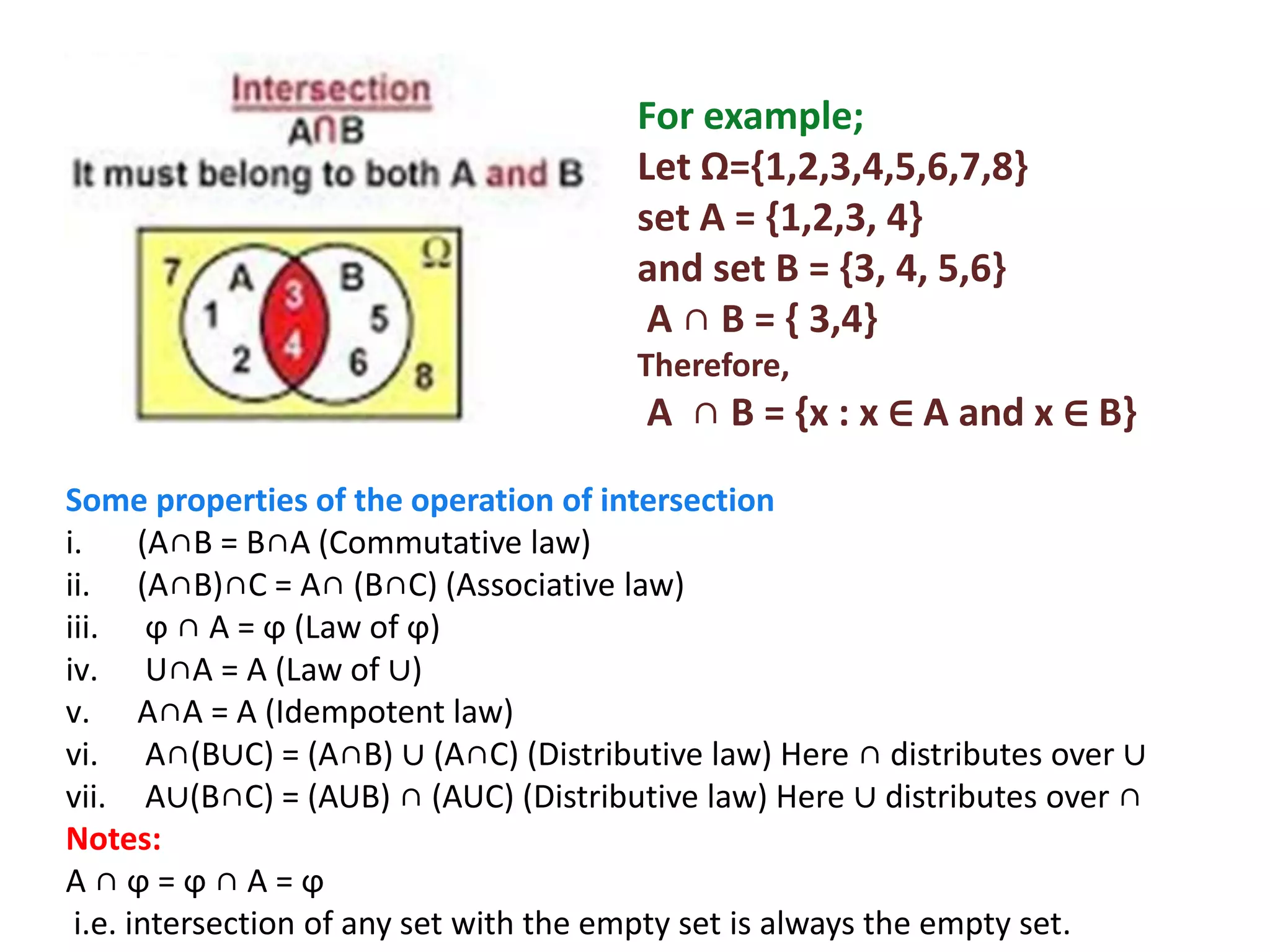
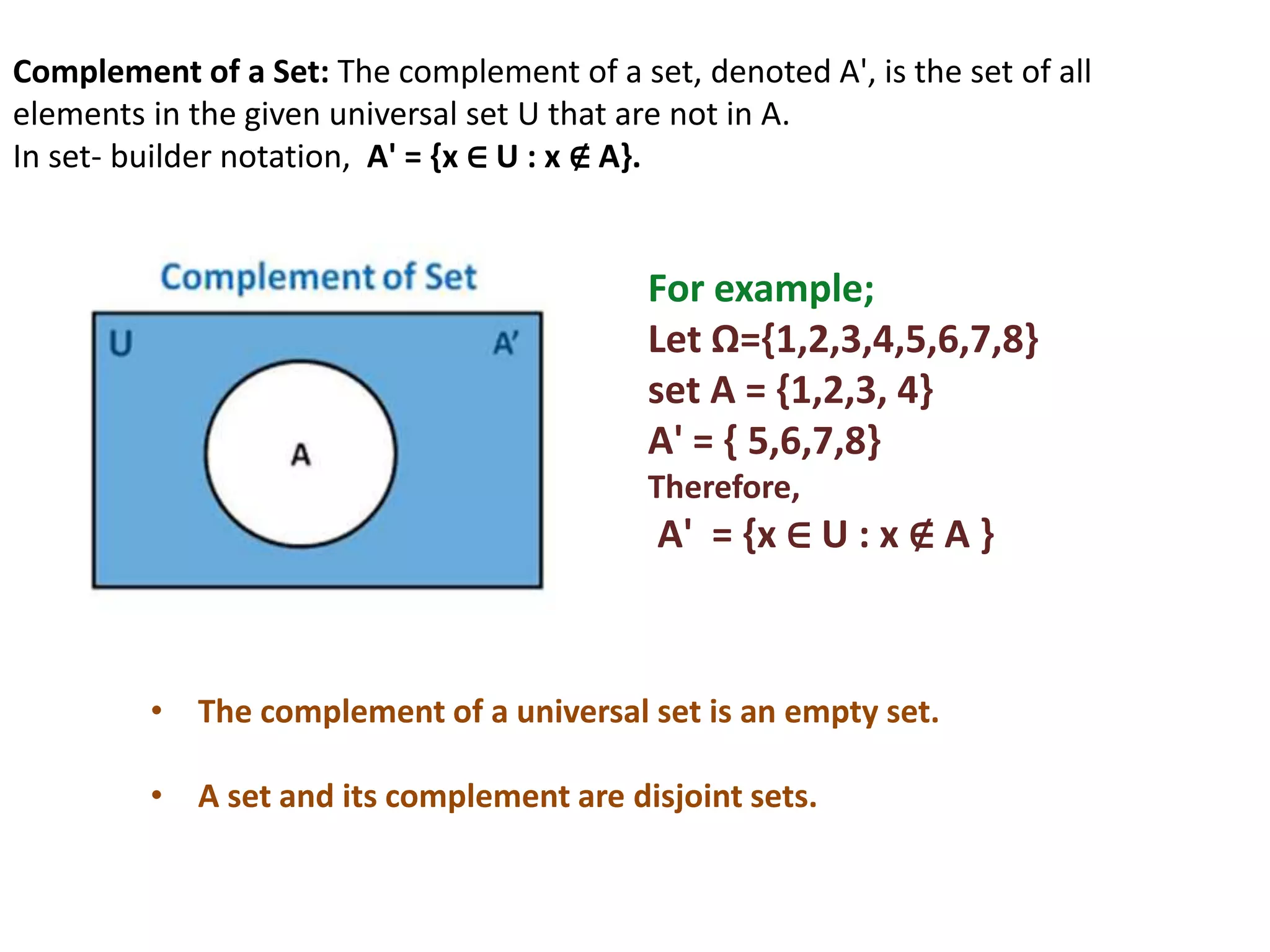
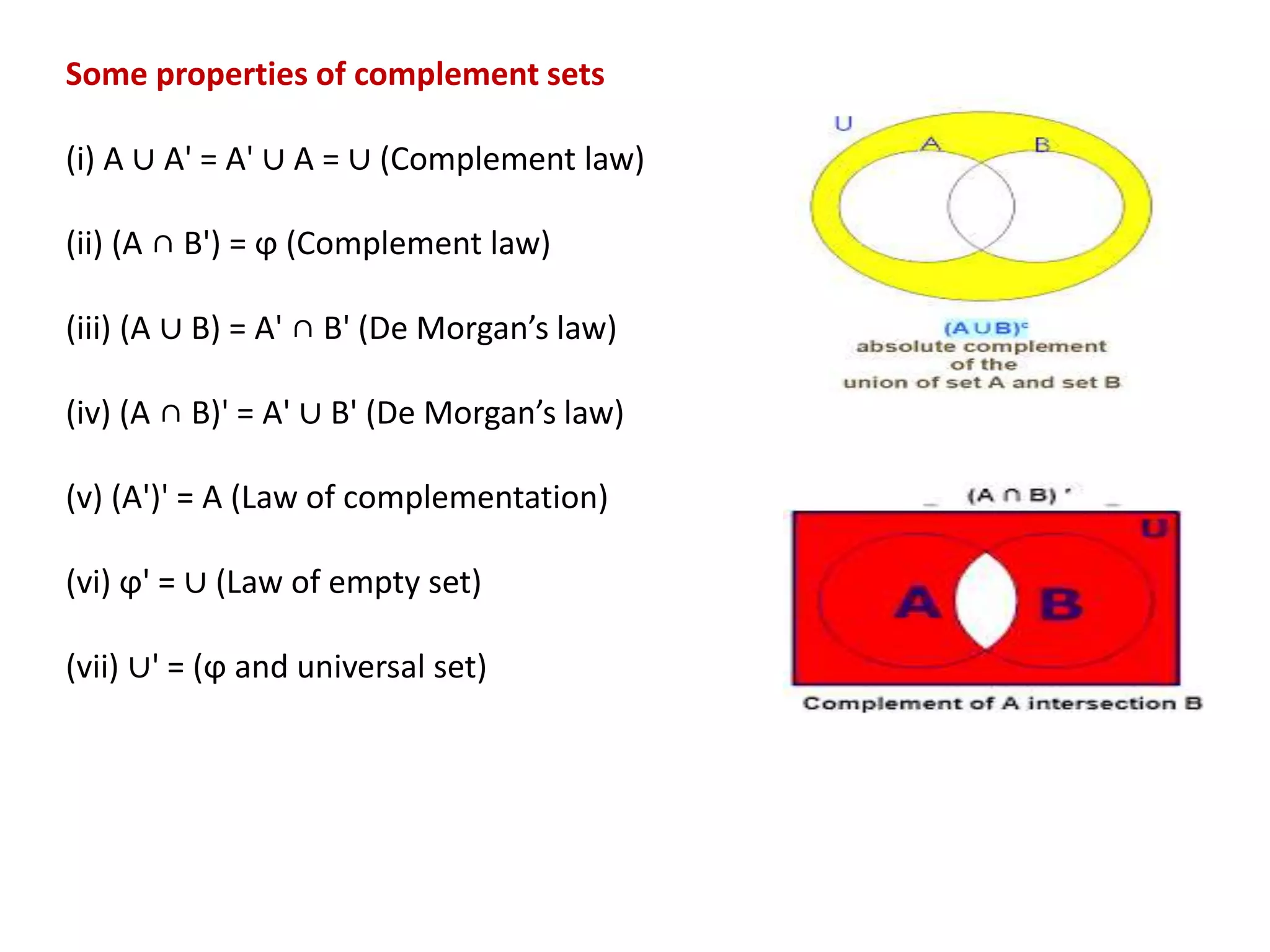
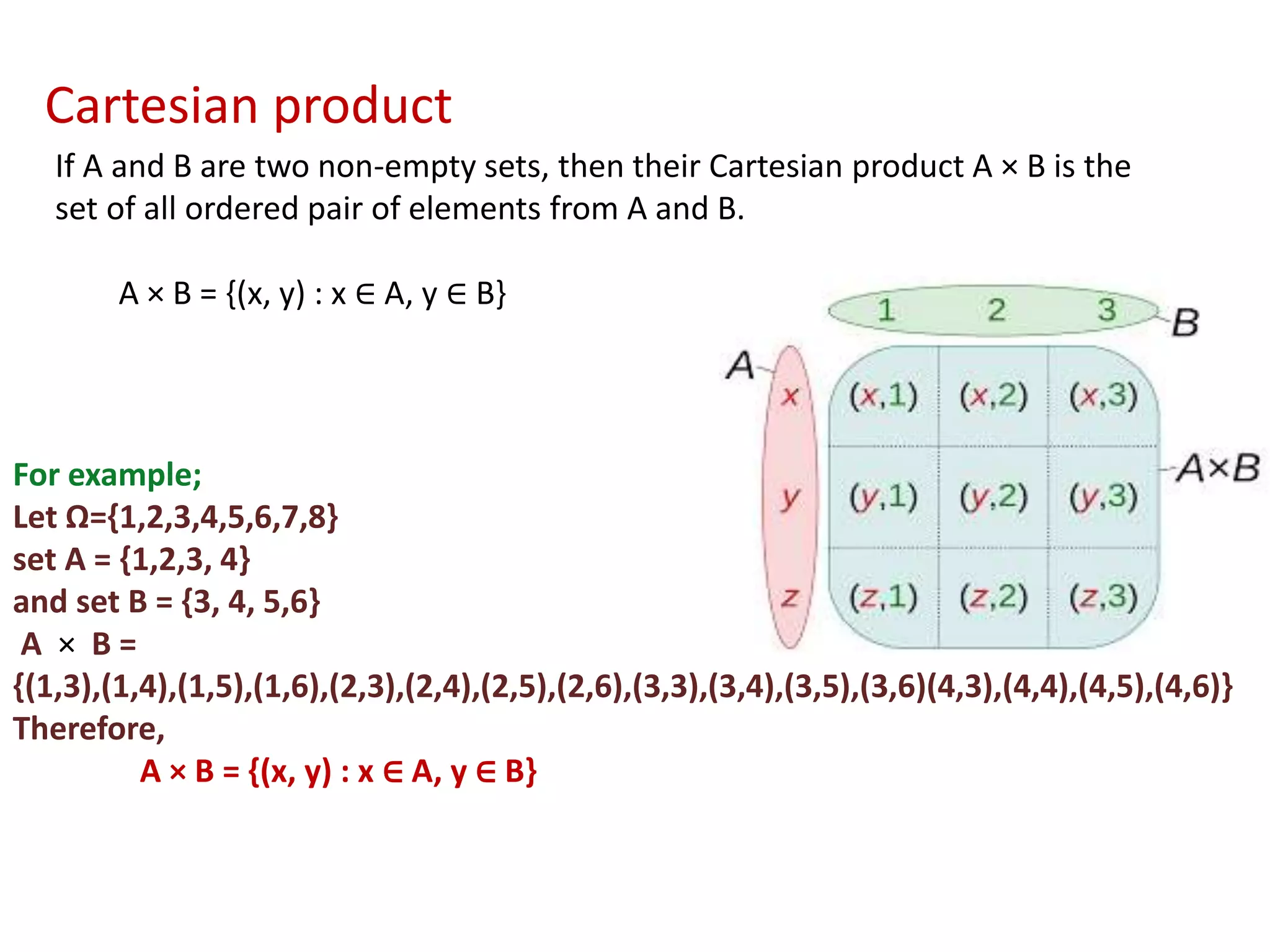

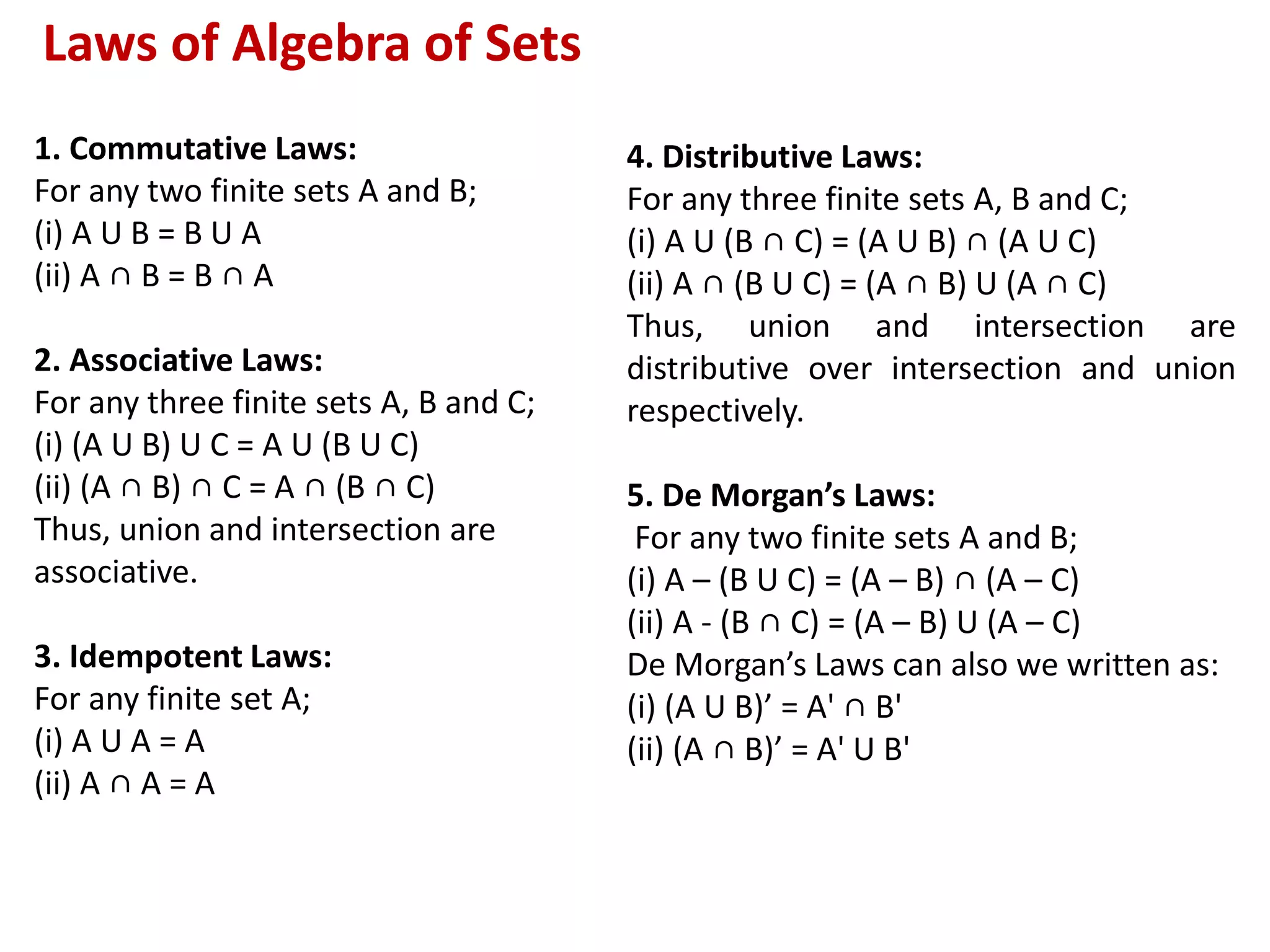
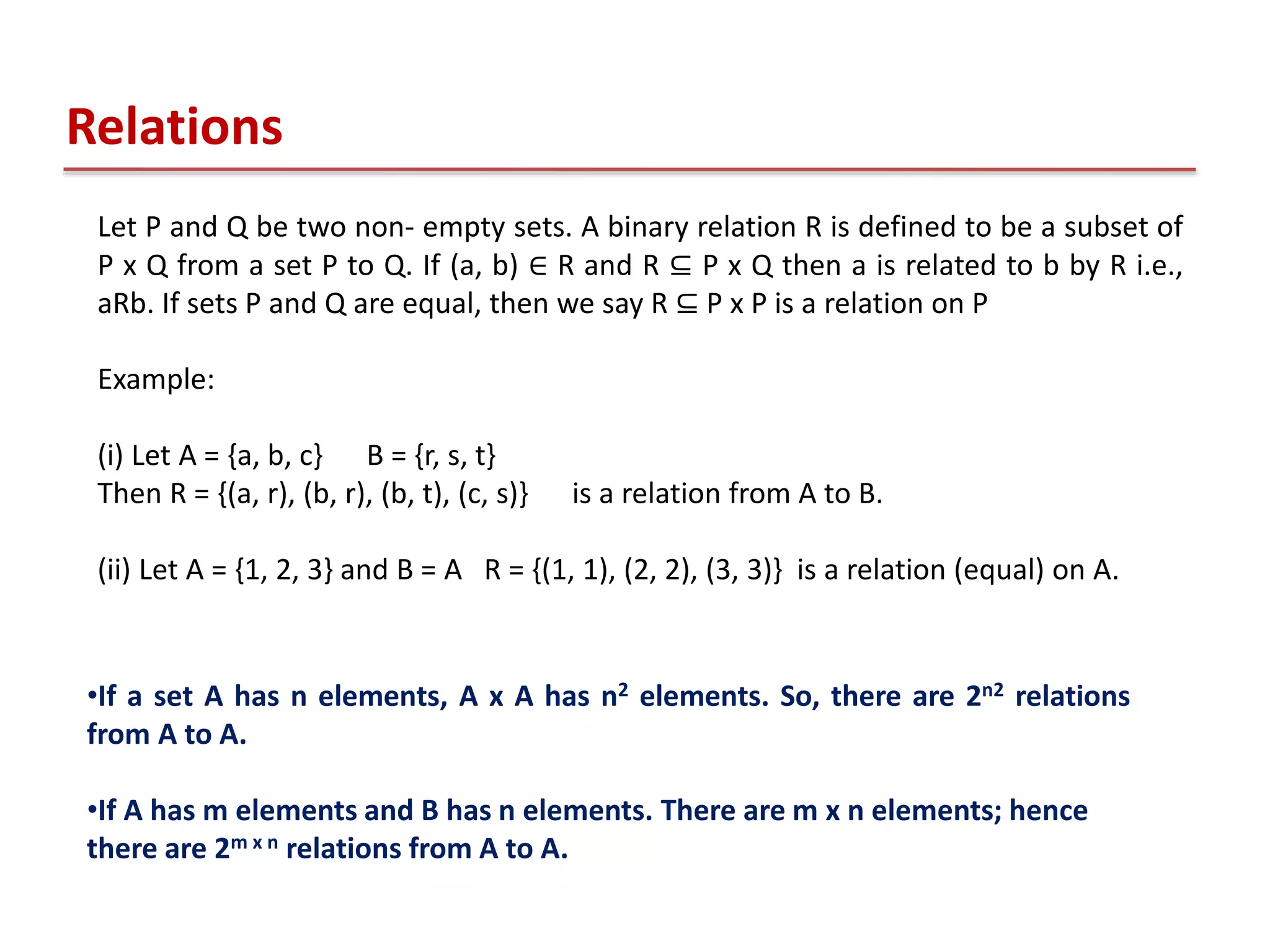

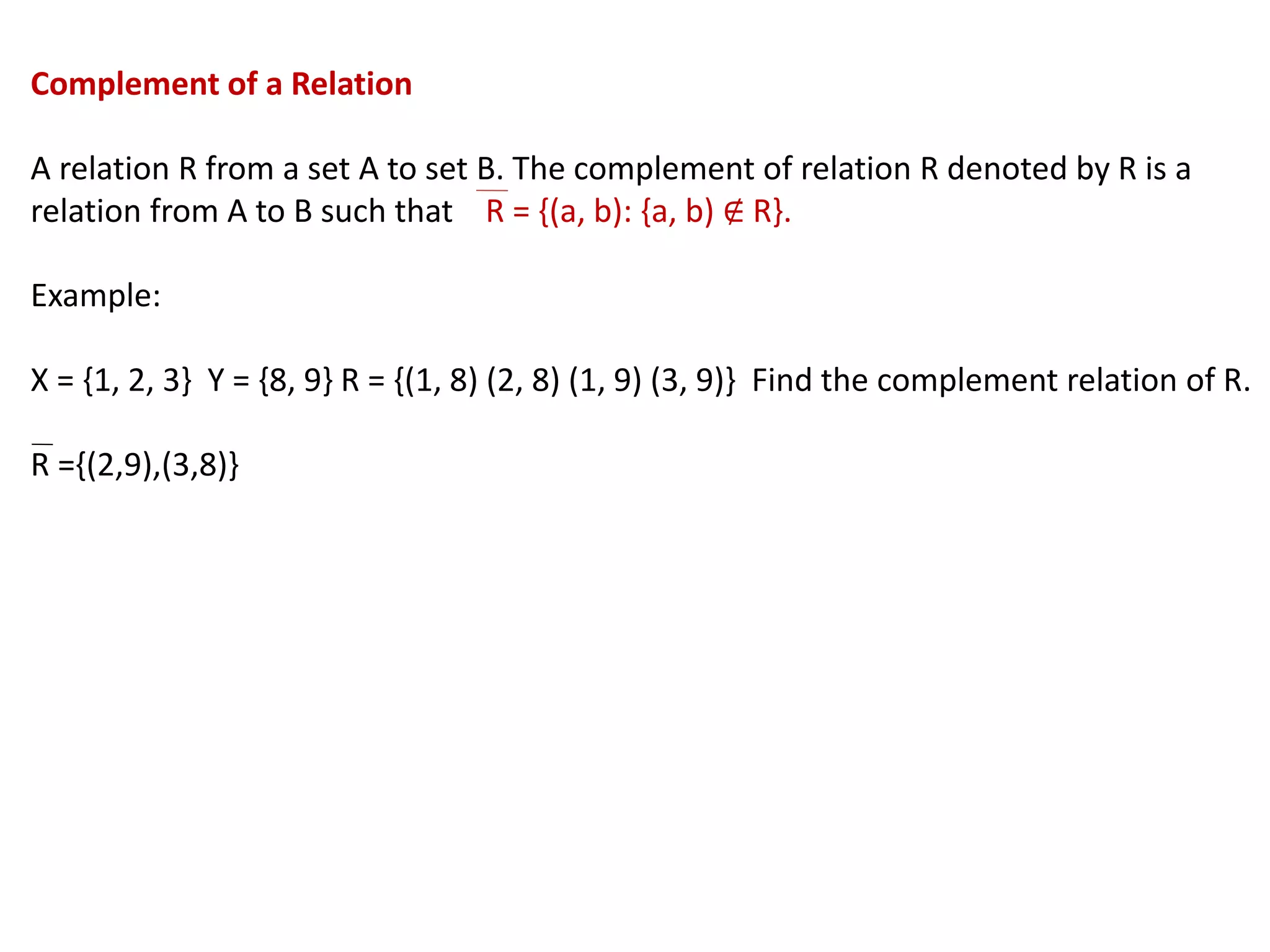
![Representation of Relations
1. Relation as a Matrix Let P = [a1,a2,a3,.......am] and Q
= [b1,b2,b3......bn] are finite sets, containing m and n
number of elements respectively. R is a relation from
P to Q. The relation R can be represented by m x n
matrix M = [Mij], defined as Mij = 0 if (ai,bj) ∉ R
Mij = 1 if (ai,bj )∈ R
Example
Let P = {1, 2, 3, 4}, Q = {a, b, c, d}
and R = {(1, a), (1, b), (1, c), (2, b), (2, c), (2, d)}
2. Relation as a Directed Graph: There is another
way of picturing a relation R when R is a relation
from a finite set to itself.
Example
A = {1, 2, 3, 4}
R = {(1, 2) (2, 2) (2, 4) (3, 2) (3, 4) (4, 1) (4, 3)}](https://image.slidesharecdn.com/dmiunit1-211211092101/75/Discrete-mathematic-27-2048.jpg)
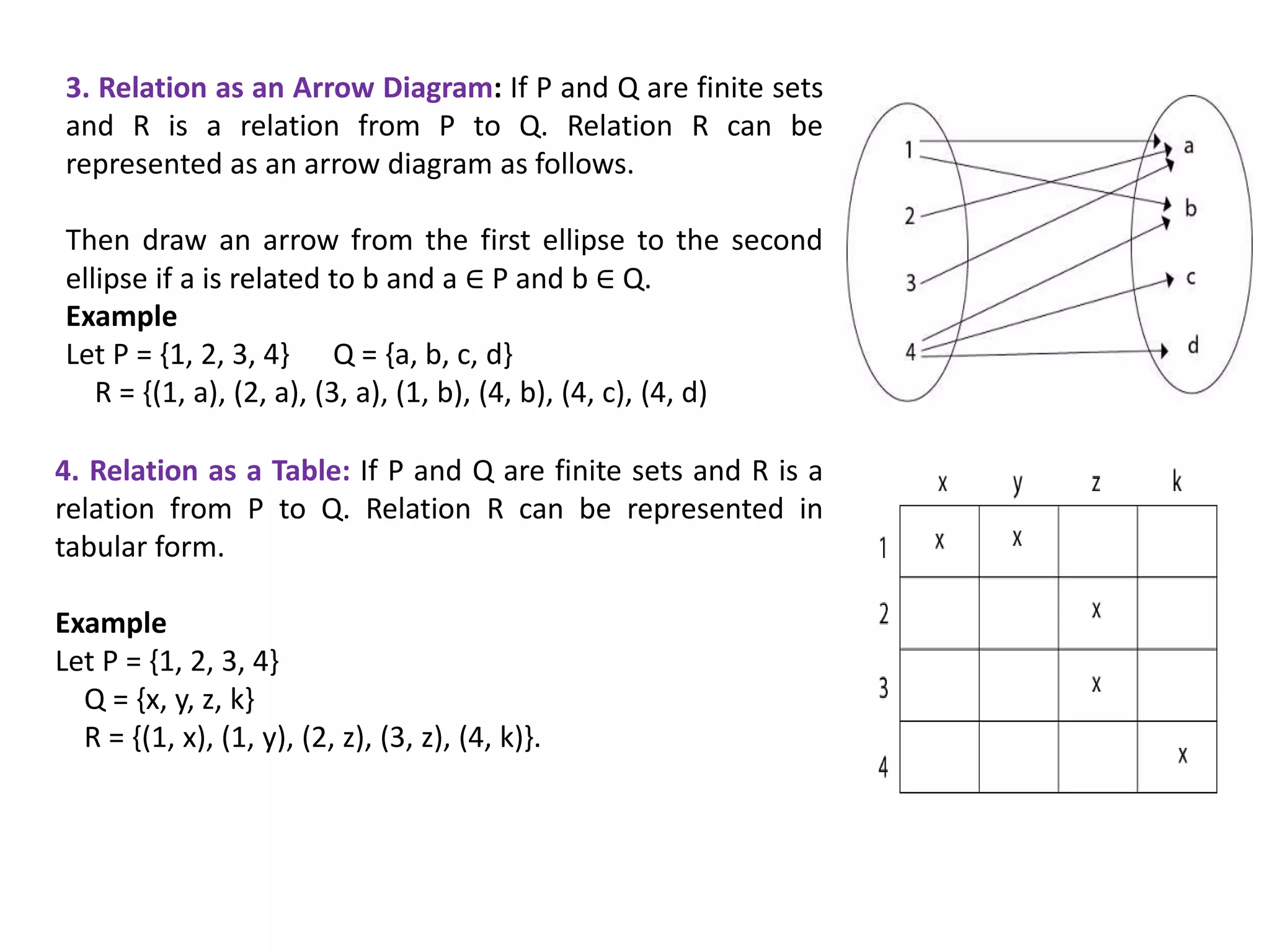
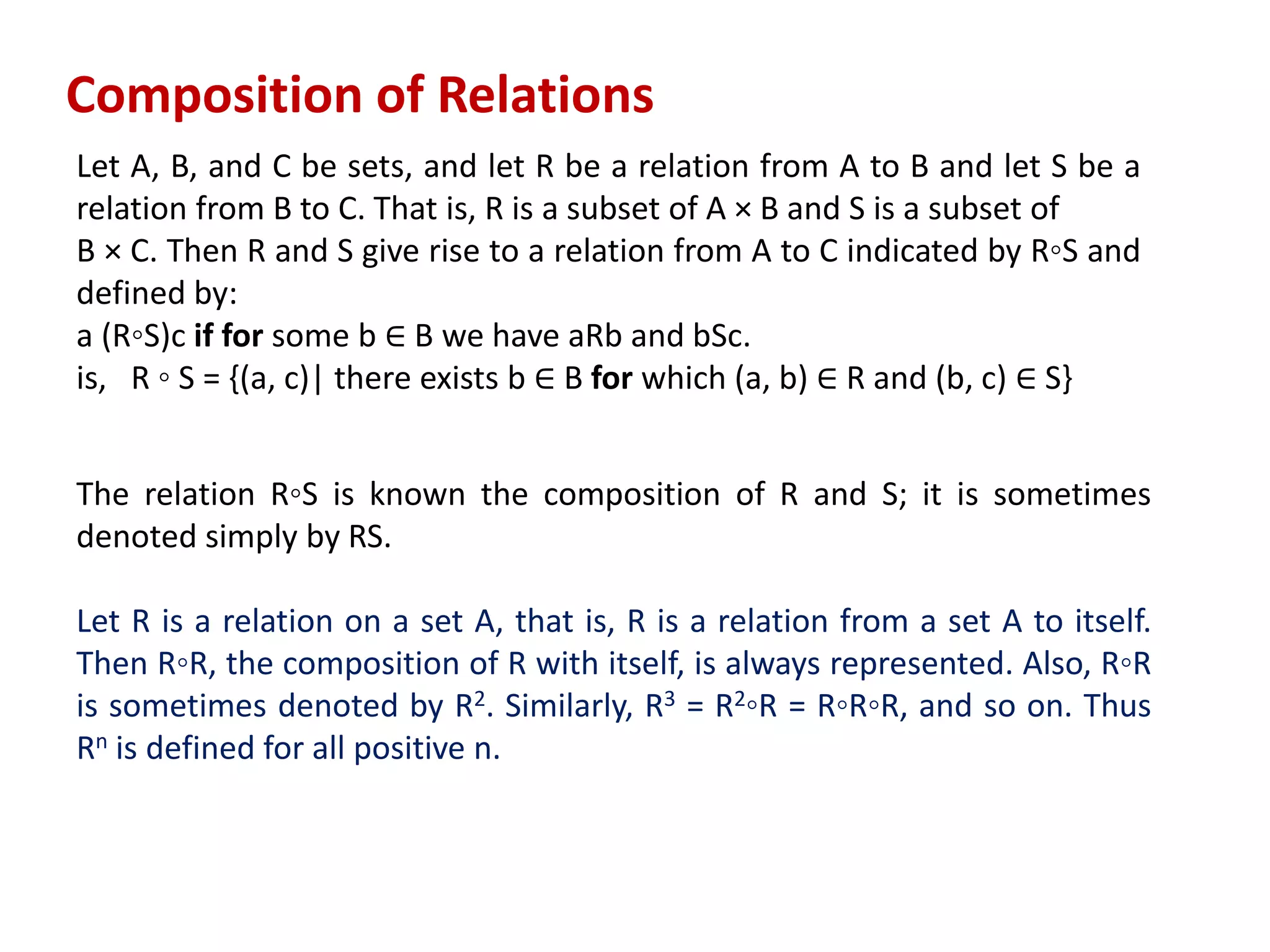

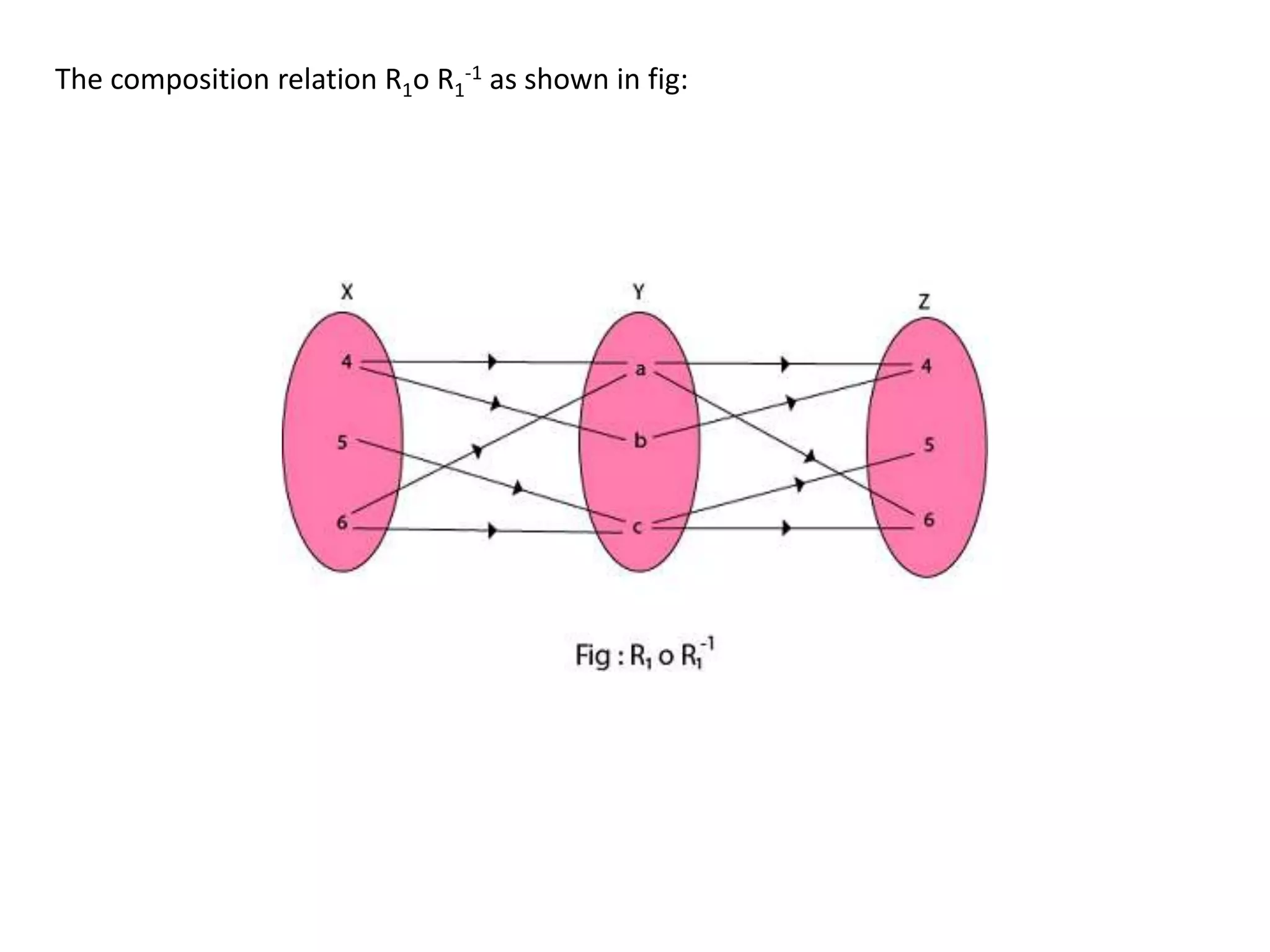
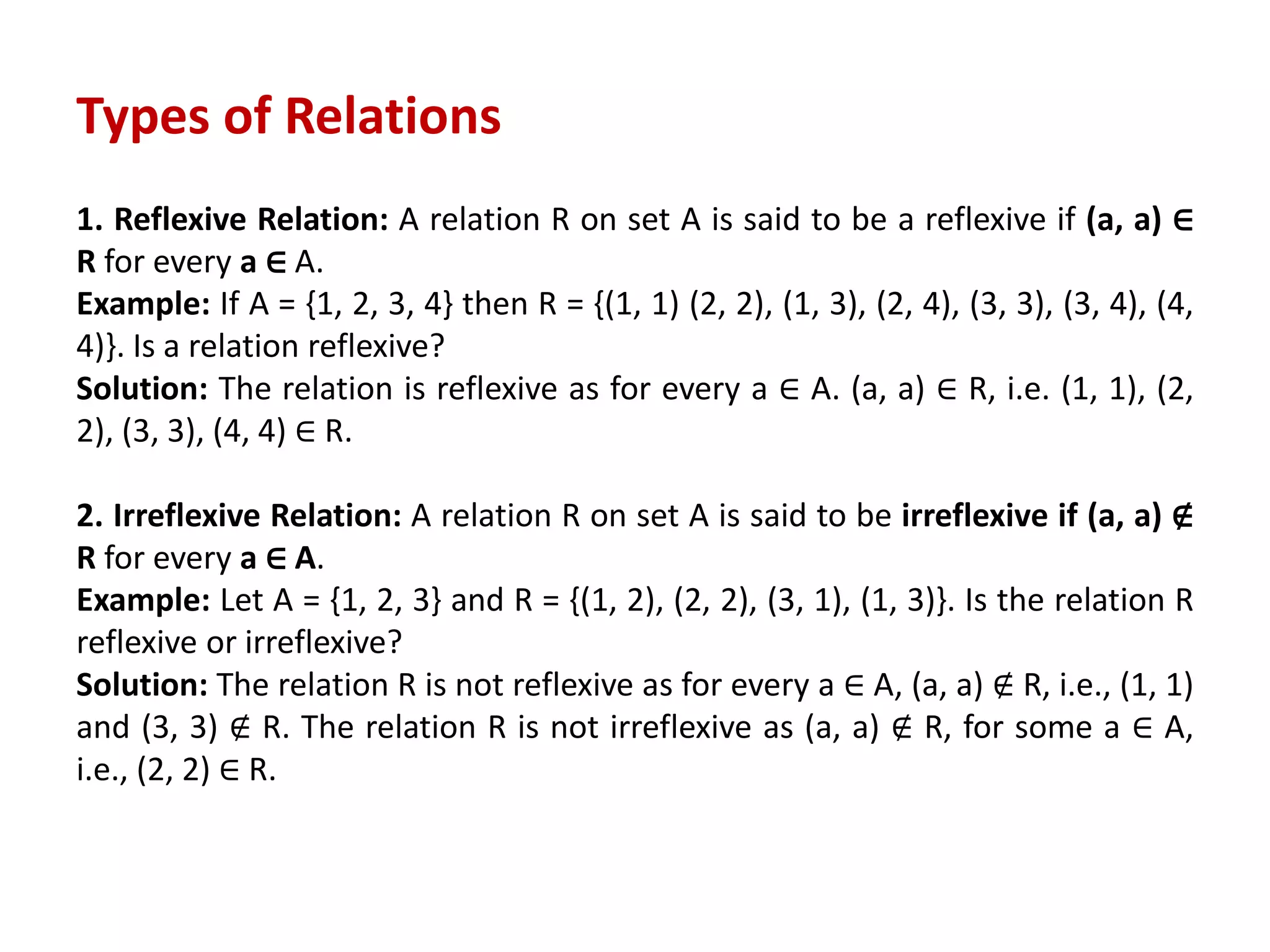
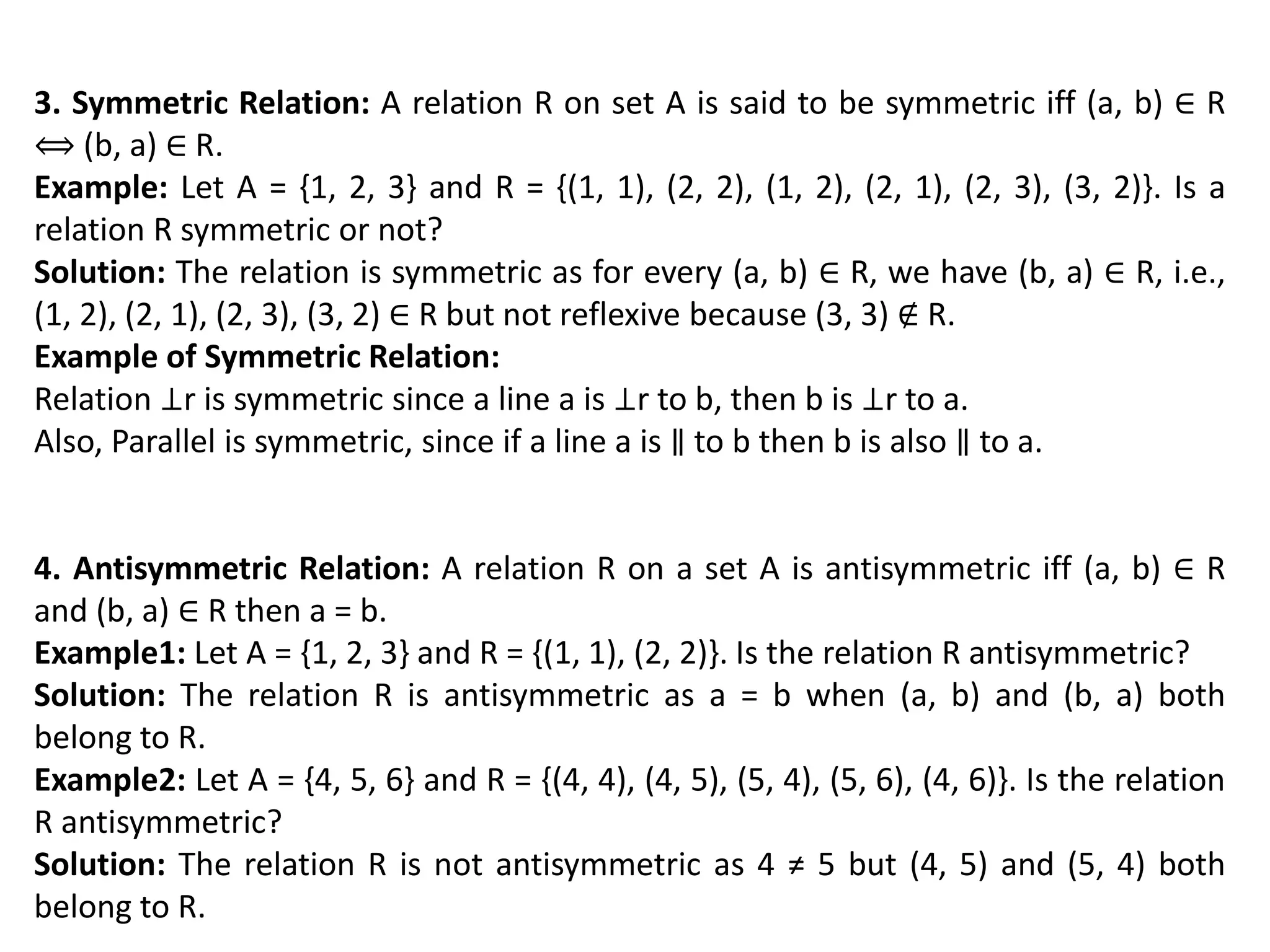
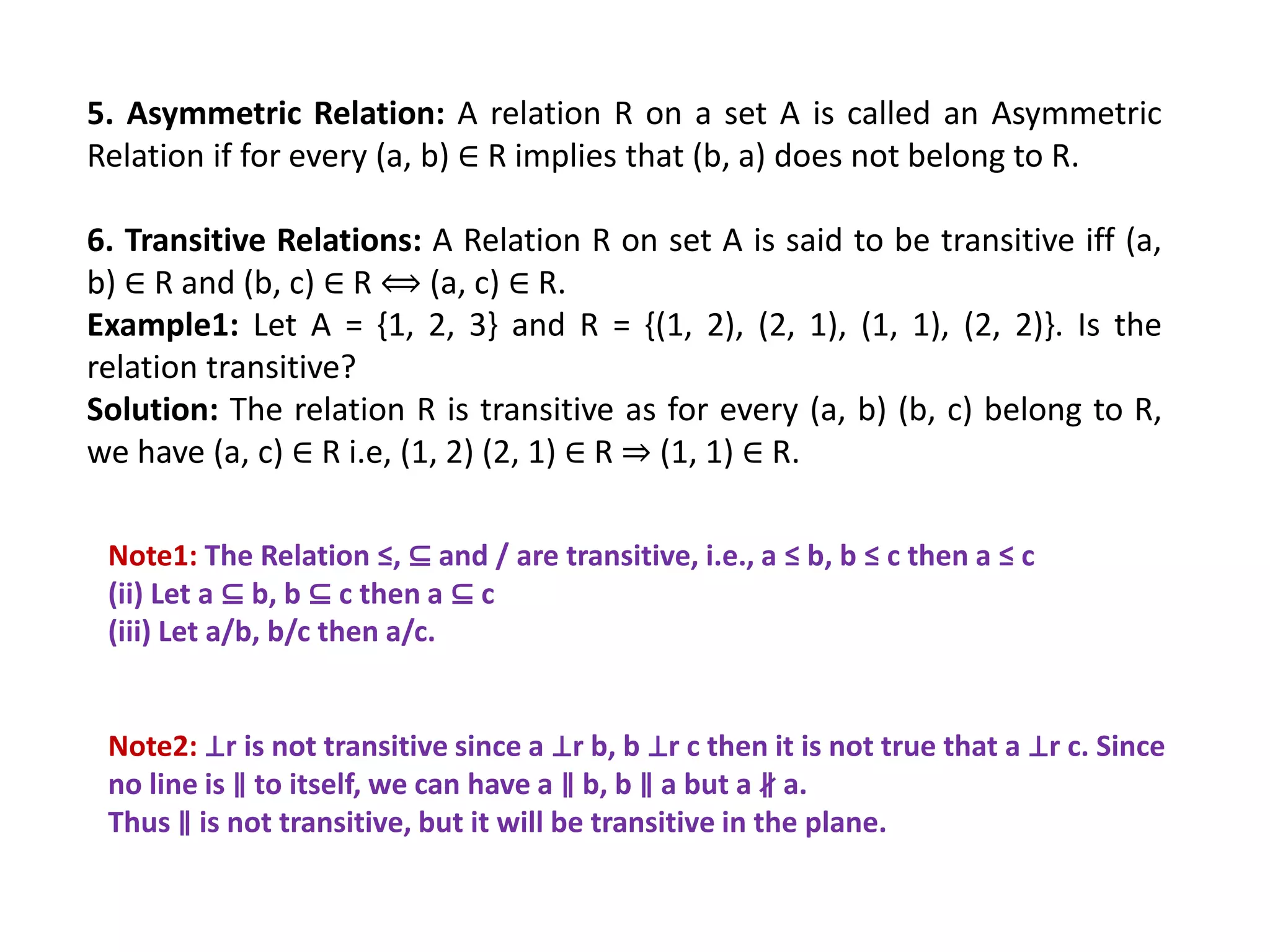
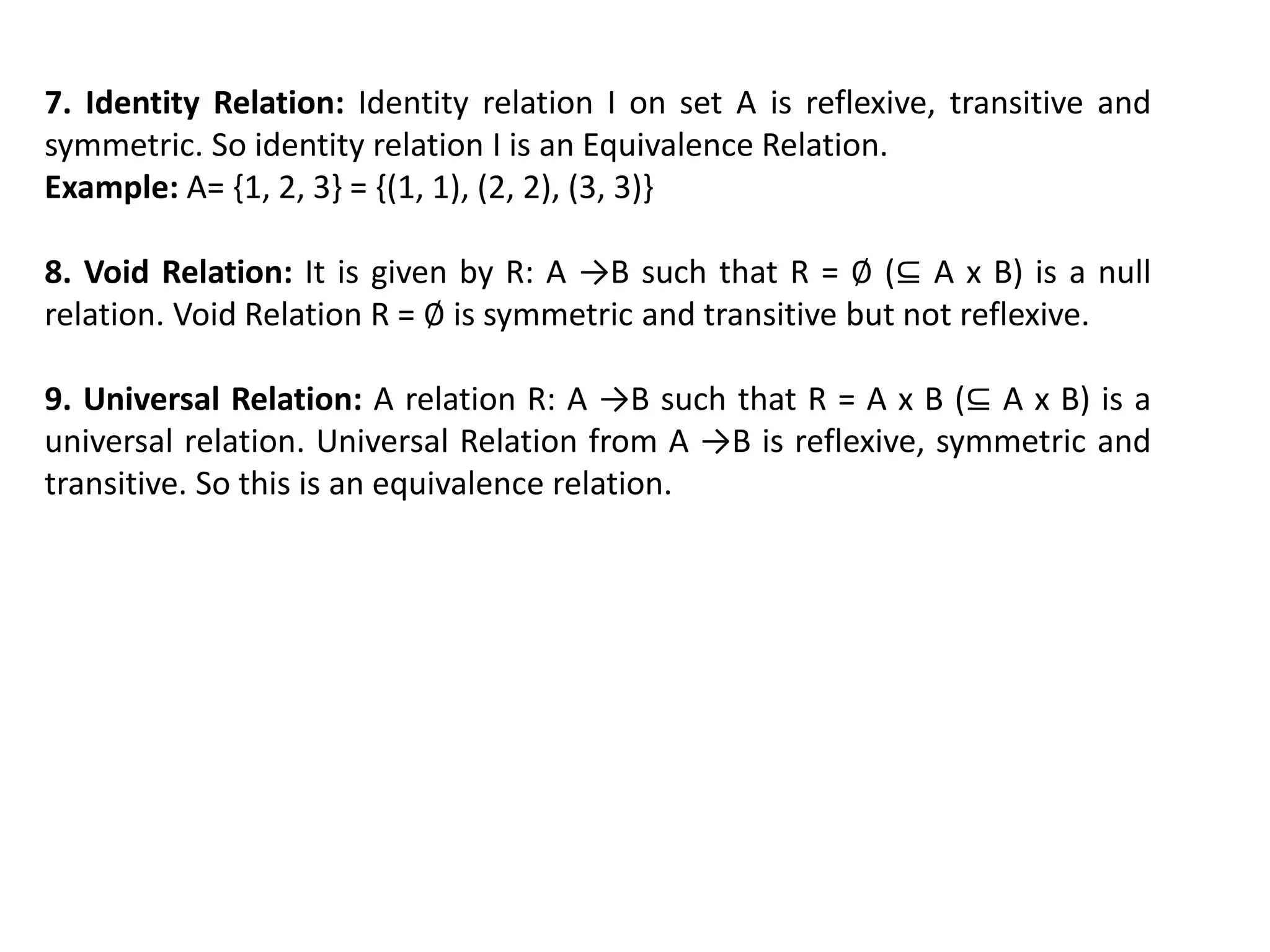
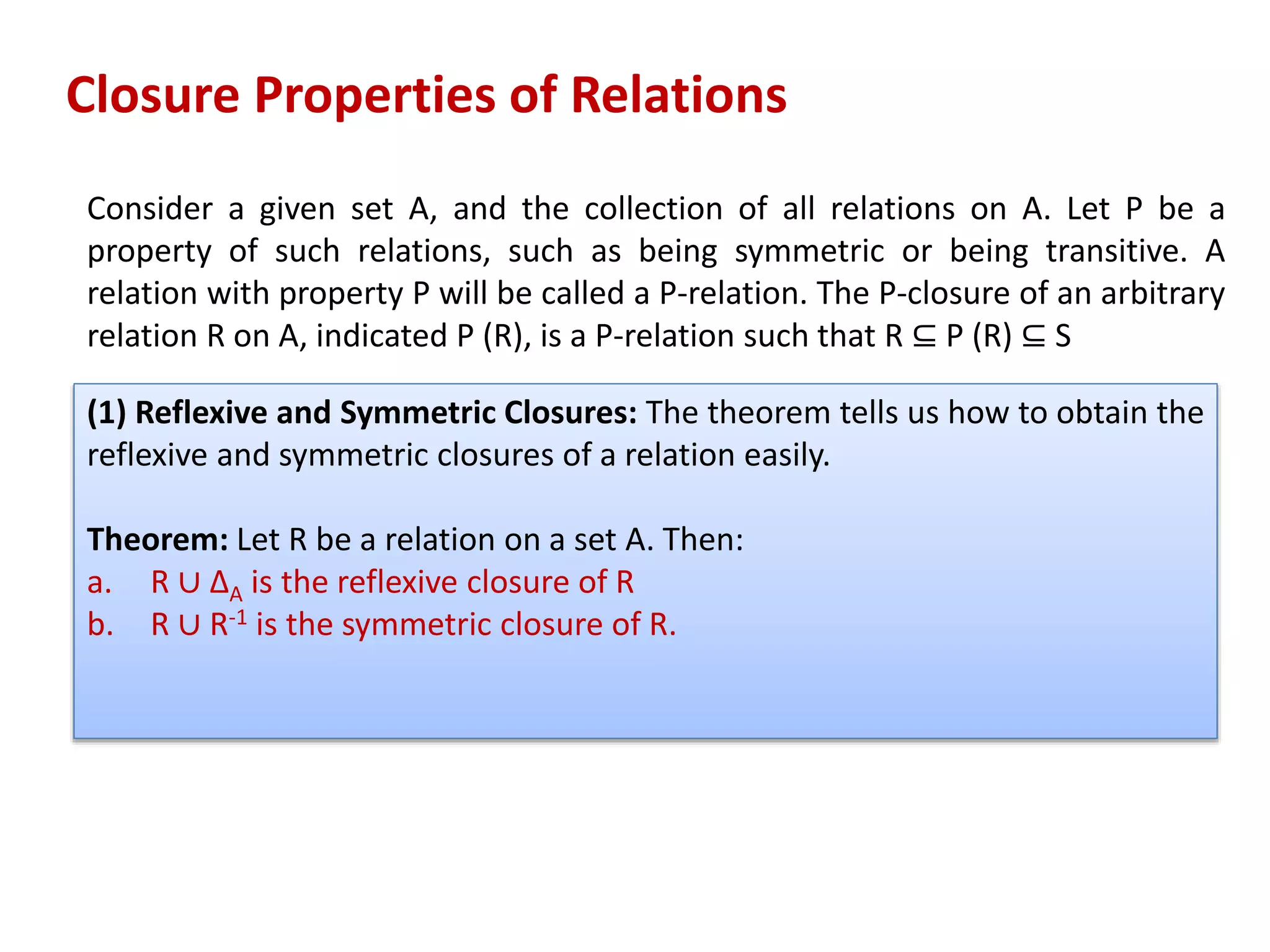
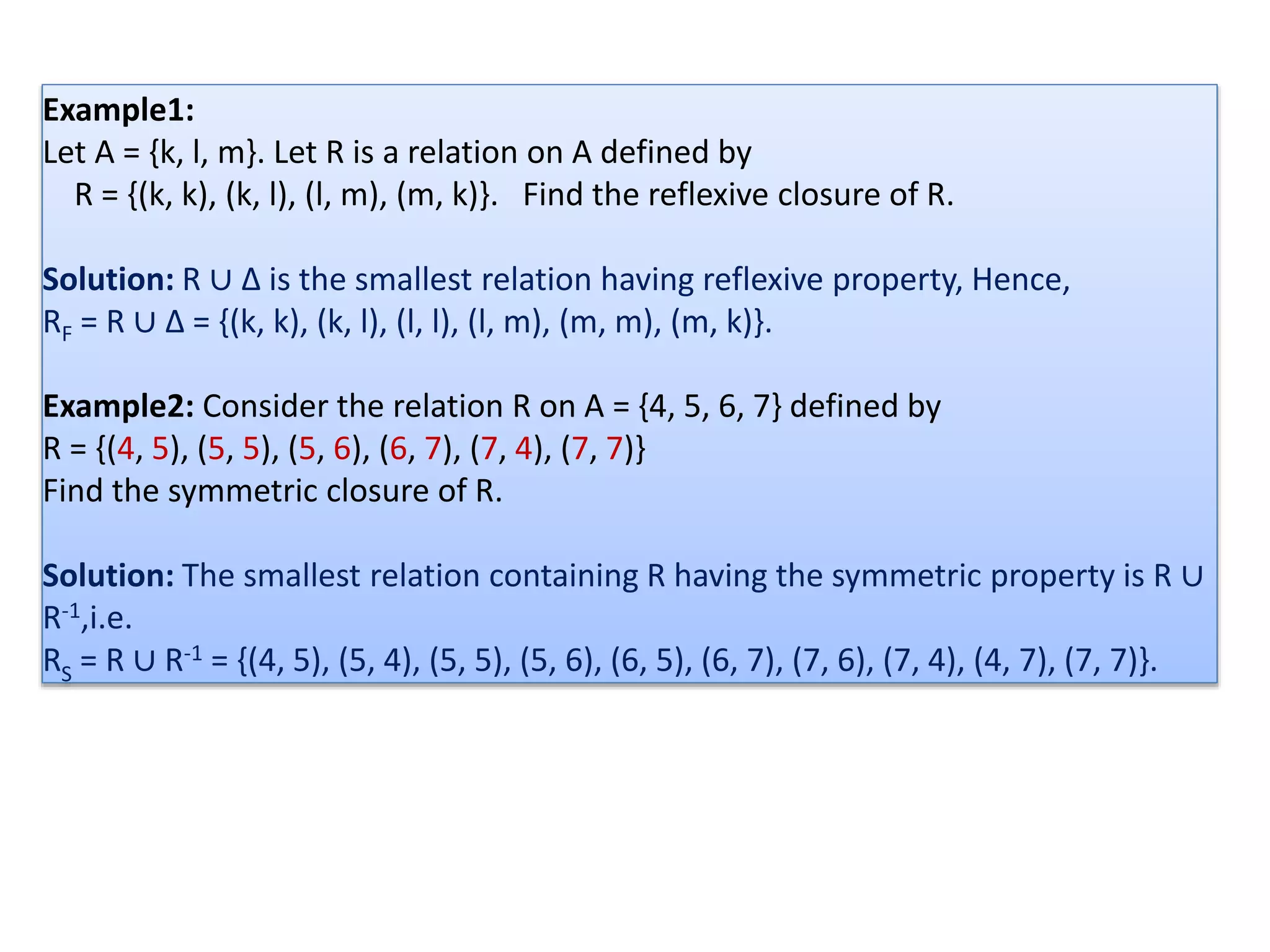

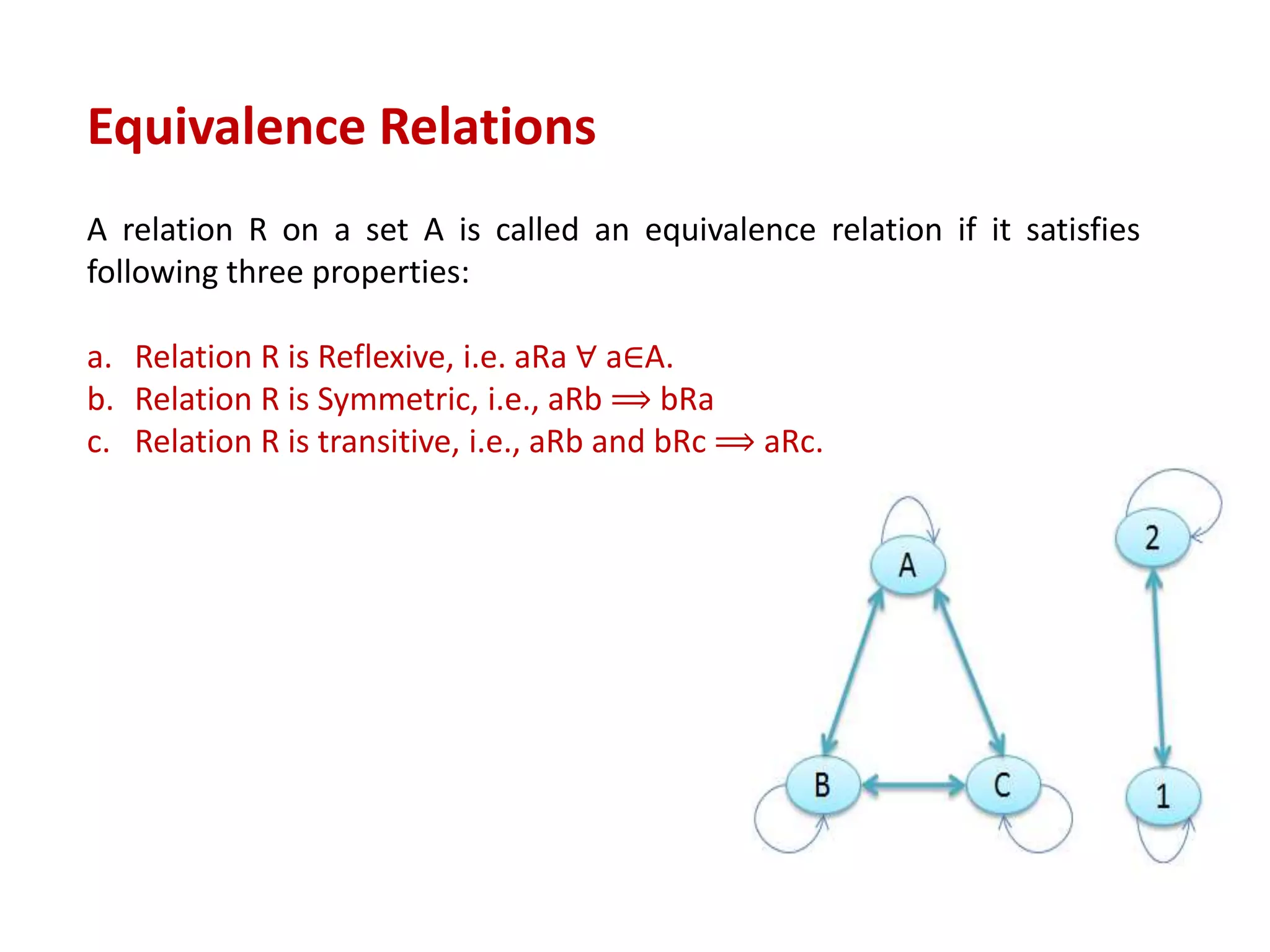

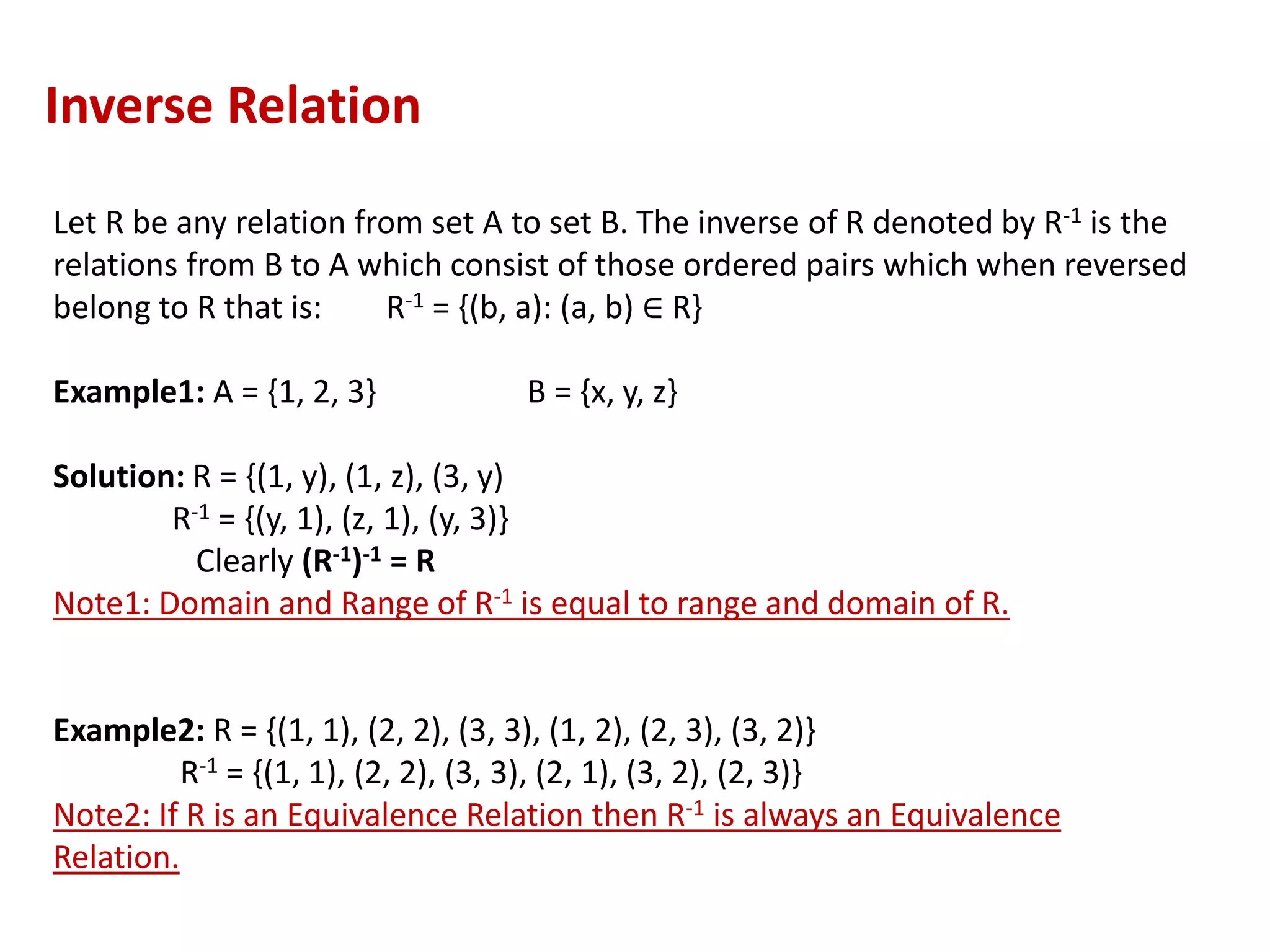
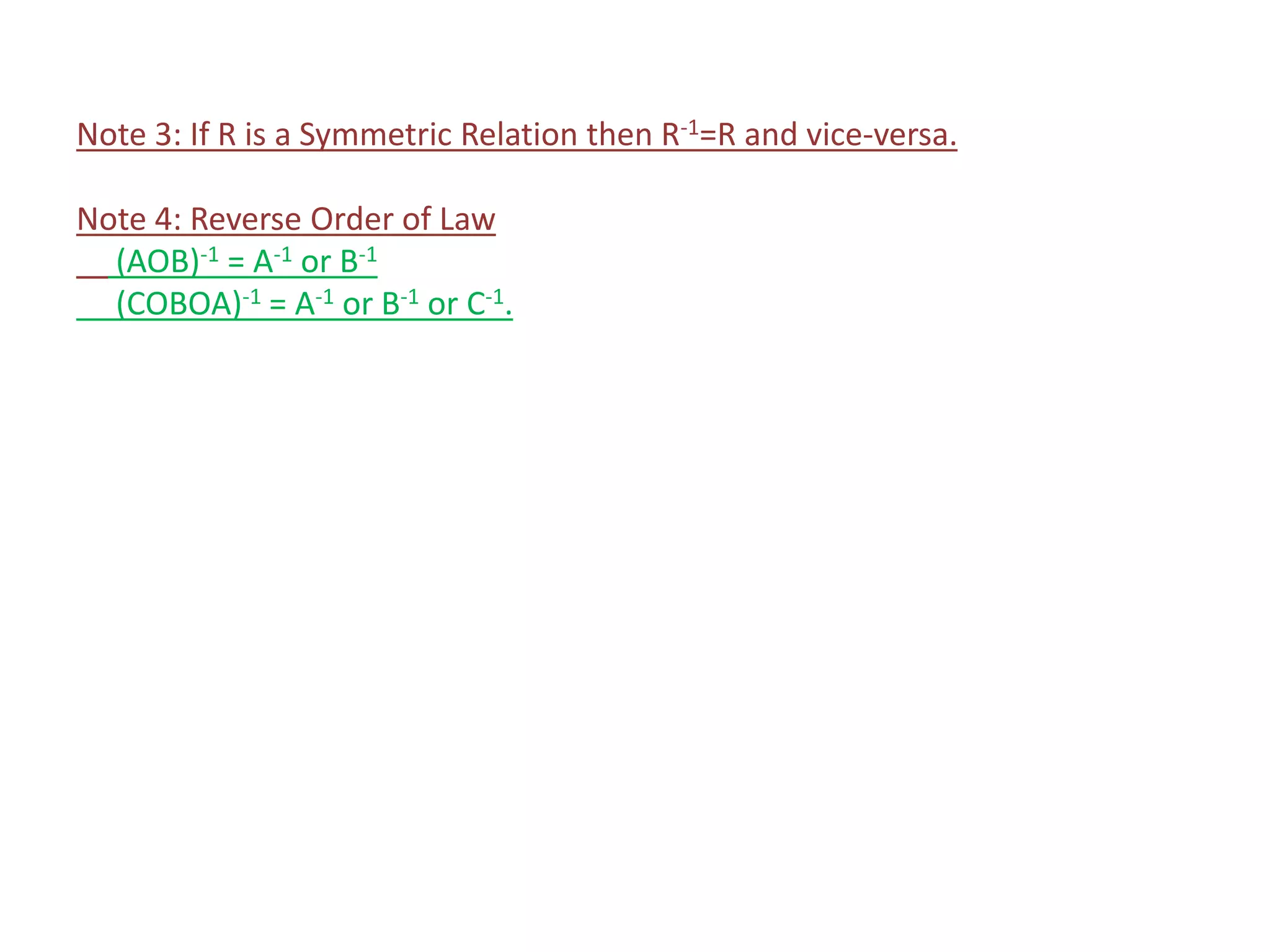
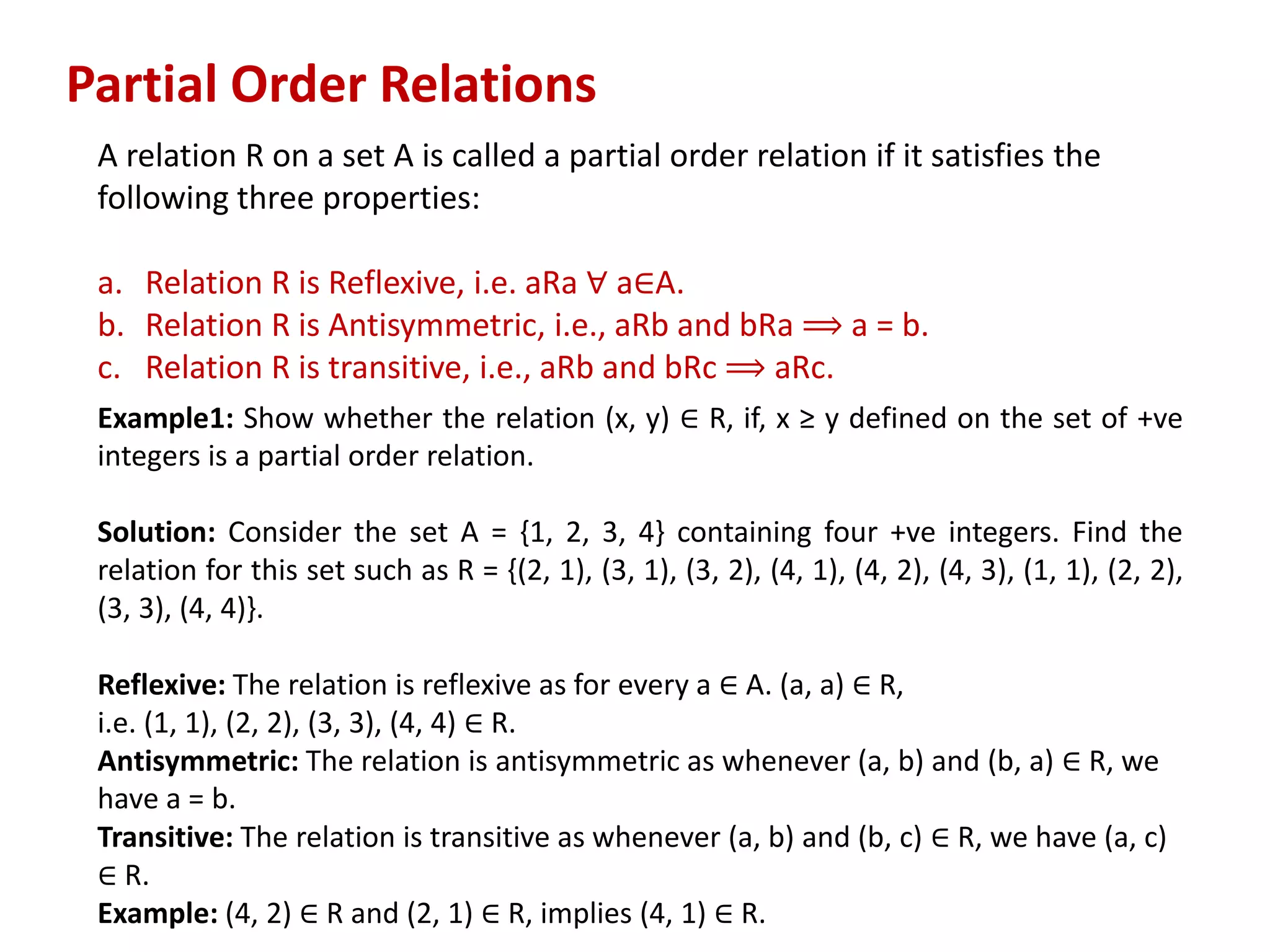
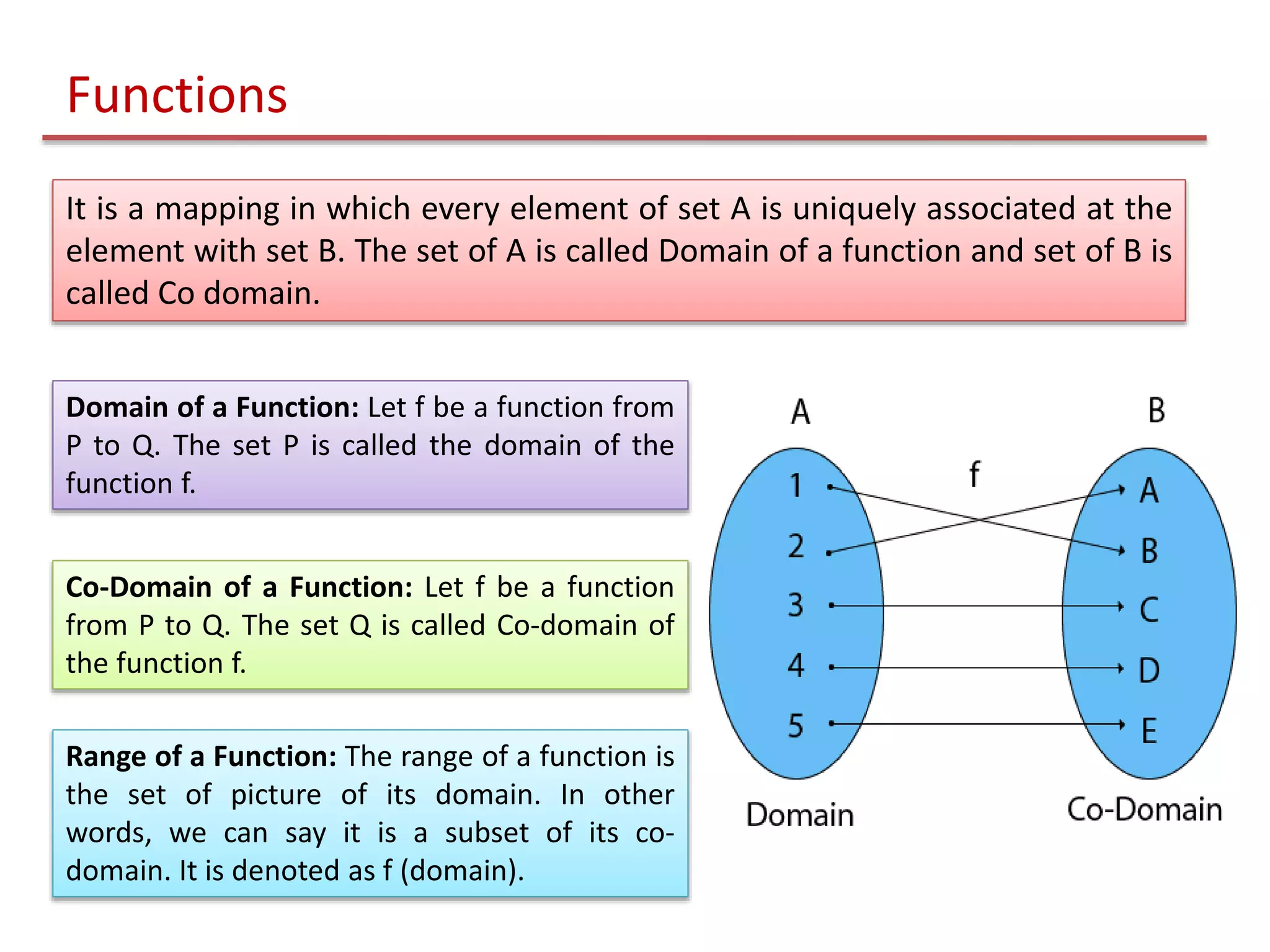
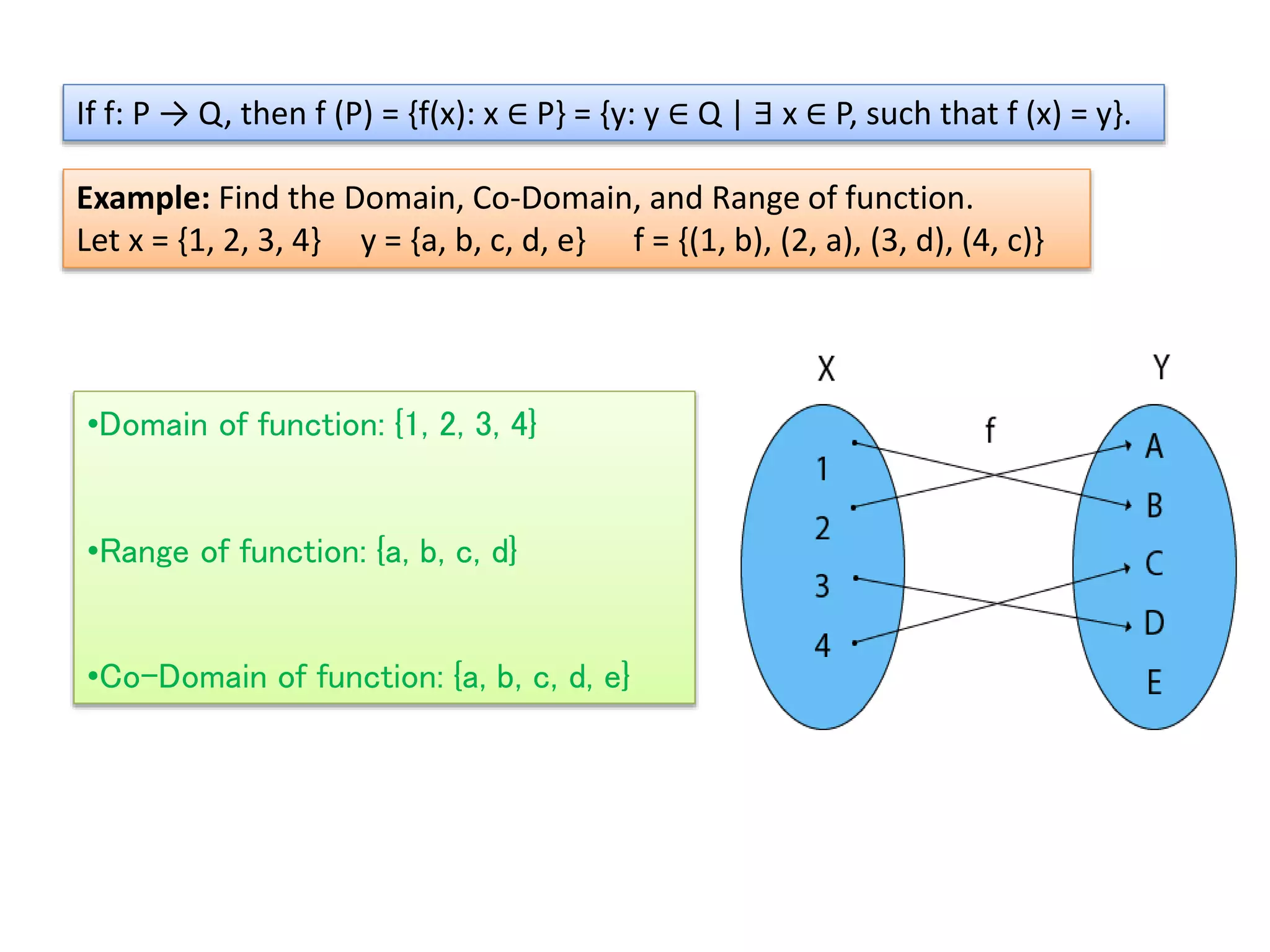

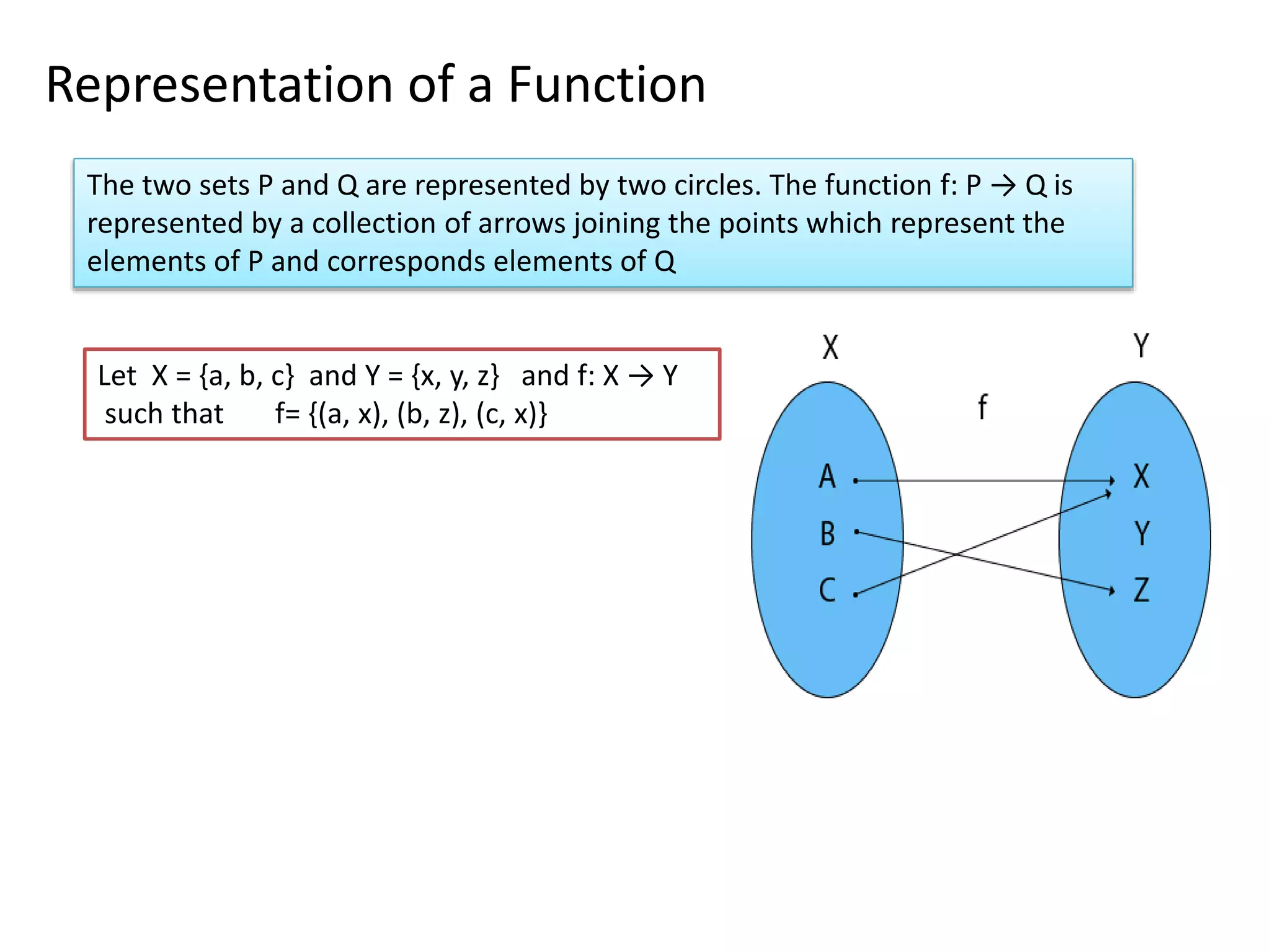


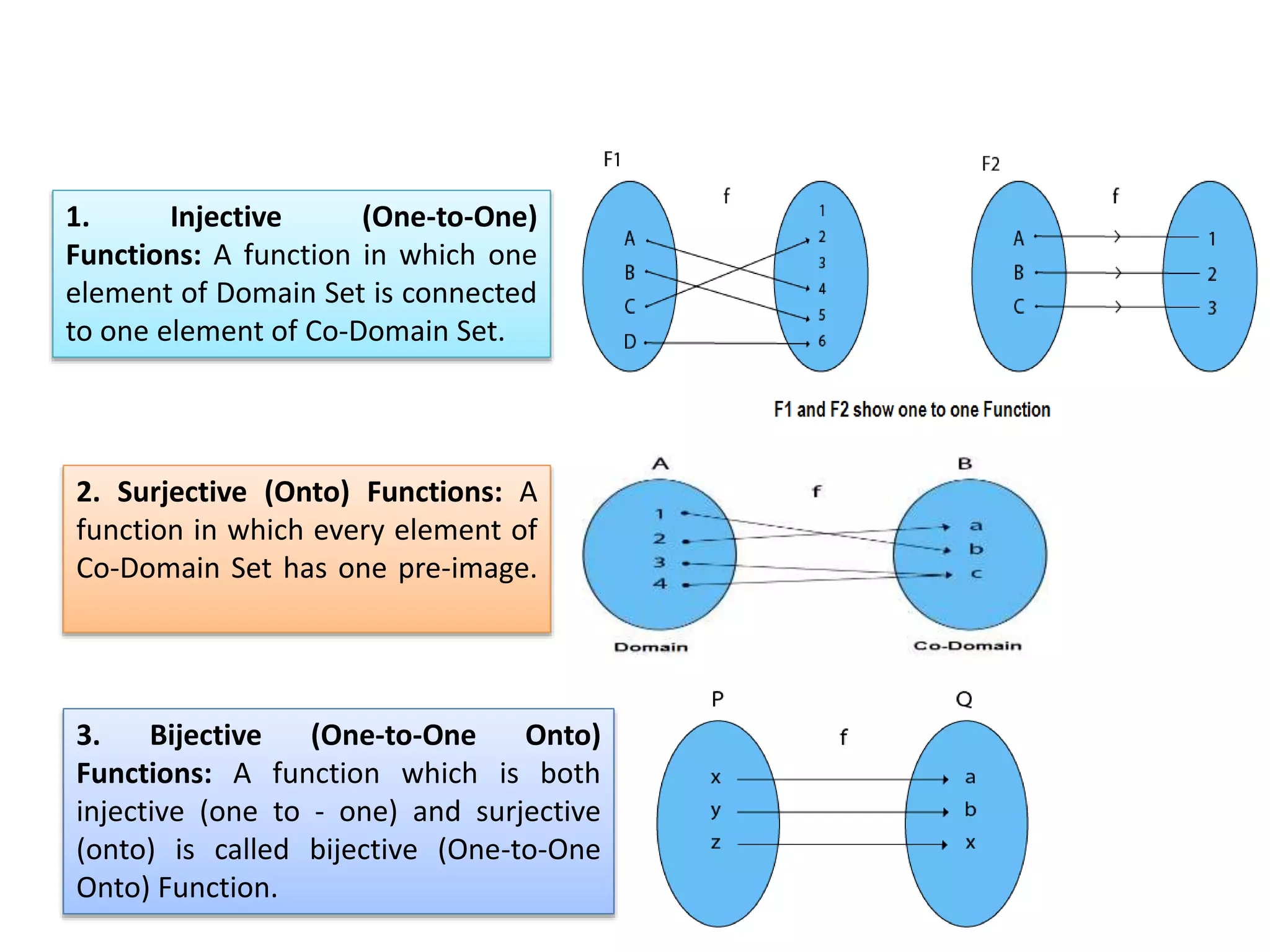
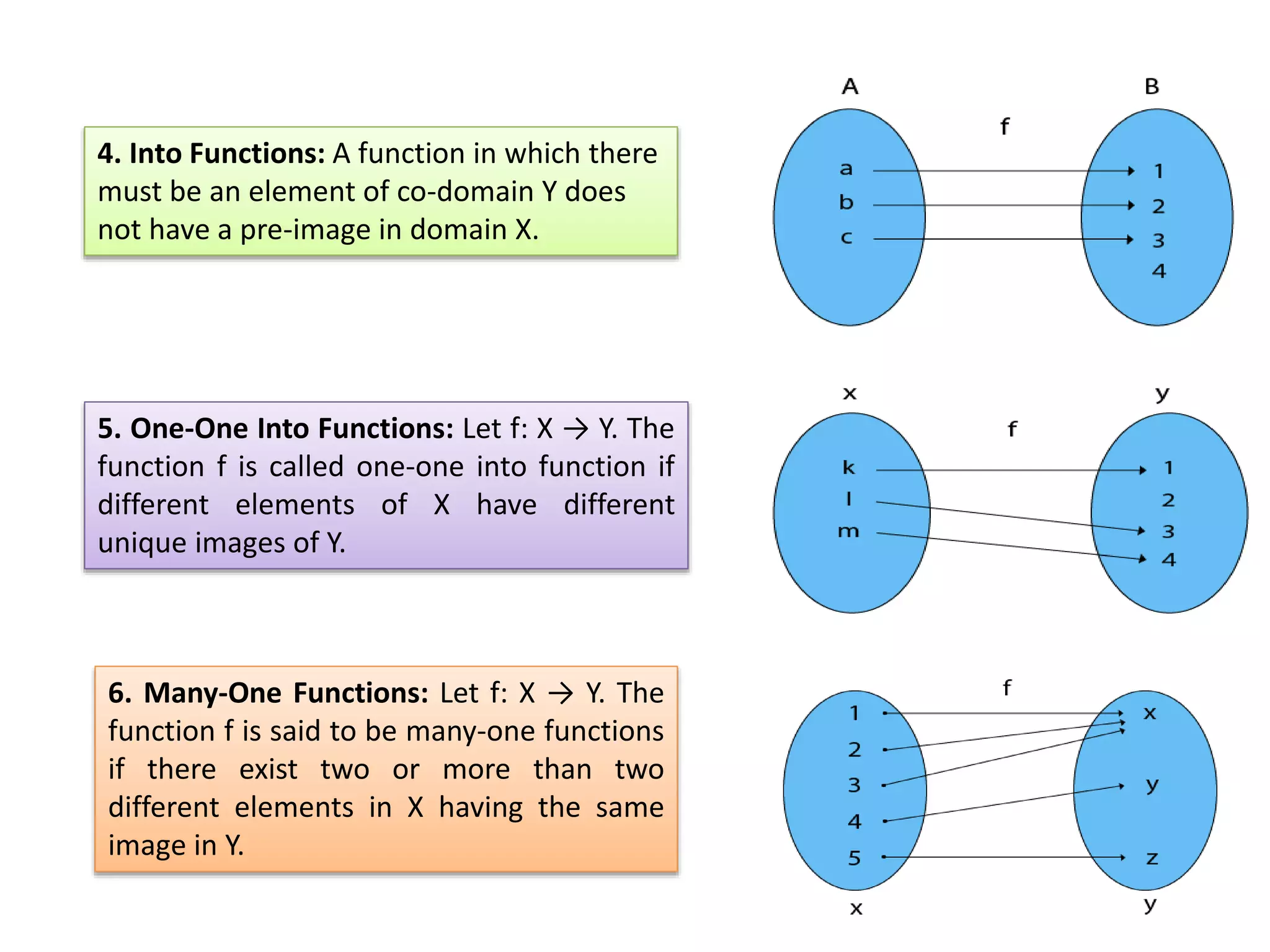
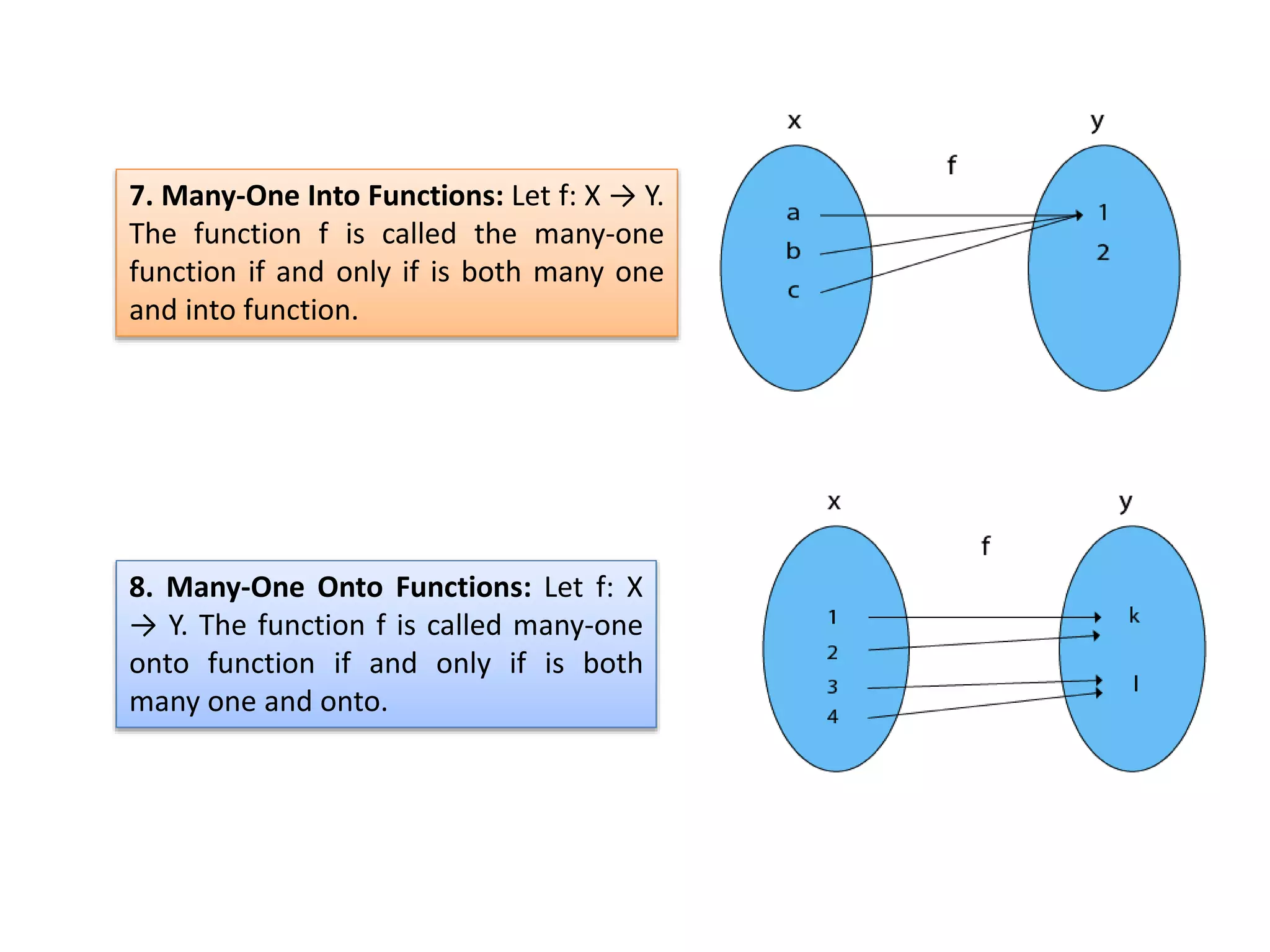


![Compositions of Functions
Two functions, f: A → B and g: B → C. The composition of f with
g is a function from A into C defined by (gof) (x) = g [f(x)] and is
defined by gof.
To find the composition of f and g, first find the image of x
under f and then find the image of f (x) under g.](https://image.slidesharecdn.com/dmiunit1-211211092101/75/Discrete-mathematic-55-2048.jpg)
![(gof) (1) = g [f (1)] = g (a) = 5
(gof) (2) = g [f (2)] = g (a) = 5
(gof) (3) = g [f (3)] = g (b) = 7.
Let X = {1, 2, 3} Y = {a, b}
Z = {5, 6, 7}. Consider the
function f = {(1, a), (2, a), (3, b)}
and g = {(a, 5), (b, 7)} as in
figure. Find the composition of
gof.](https://image.slidesharecdn.com/dmiunit1-211211092101/75/Discrete-mathematic-56-2048.jpg)
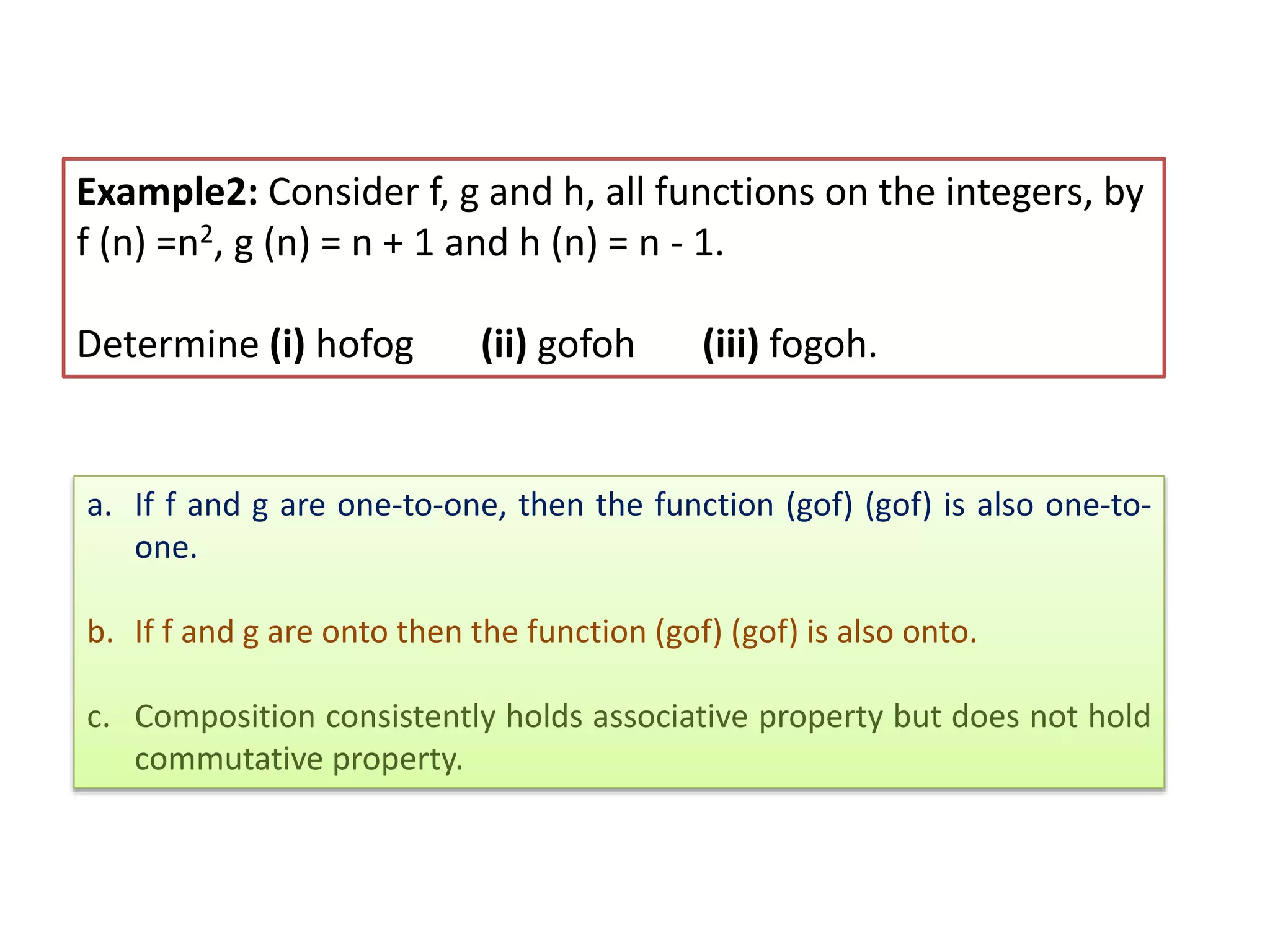
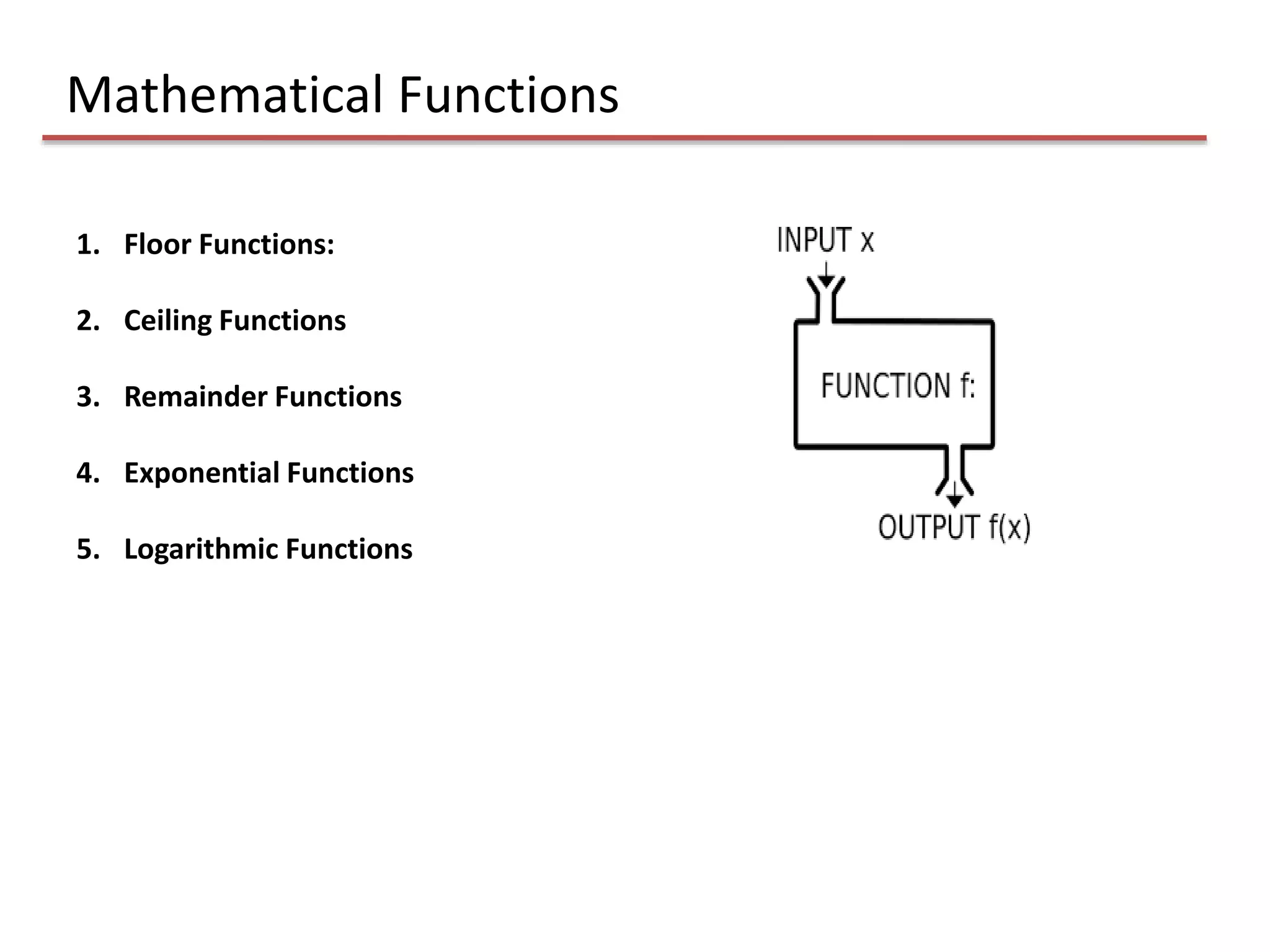
![1. Floor Functions: The floor function for any real number x is defined as f (x) is the
greatest integer 1 less than or equal to x. It is denoted by [x].
Example: Determine the value of (i)[3. 5] (ii)[-2.4] (iii)[3. 143].
Solution:
(i)[3 . 5] = 3 (ii) [-2 .4] = -3 (iii) [3. 143] = 3
2. Ceiling Functions: The ceiling function for any real number x is defined as h
(x) is the smallest integer greater than or equal to x. It is denoted by [x].
Example: Determine the value of (i)[3. 5] (ii) [-2.4] (iii) [3. 143].
Solution:
(i)[3. 5] = 4 (ii) [-2 .4] = -2 (iii) [3. 143] = 4.](https://image.slidesharecdn.com/dmiunit1-211211092101/75/Discrete-mathematic-59-2048.jpg)
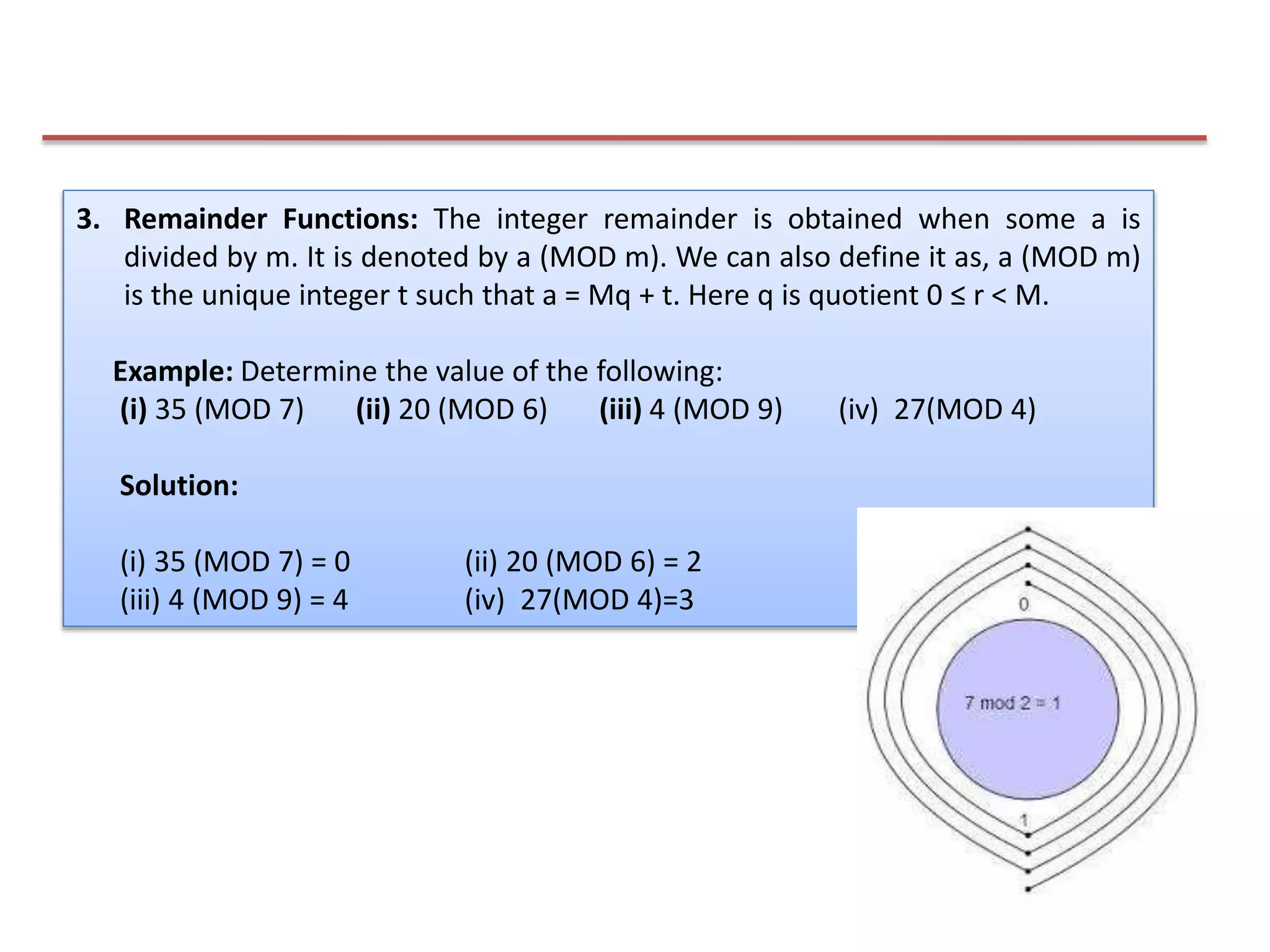
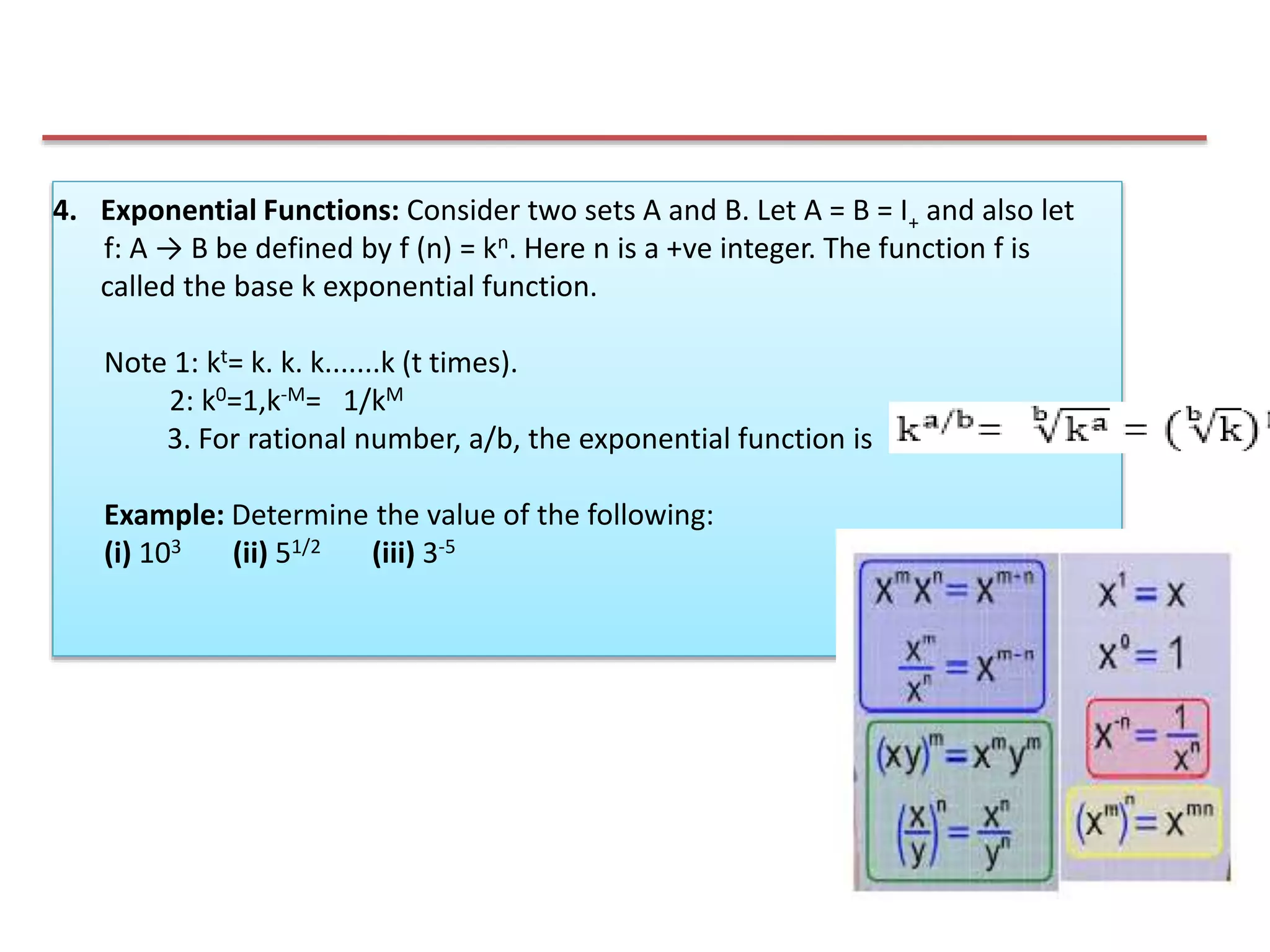
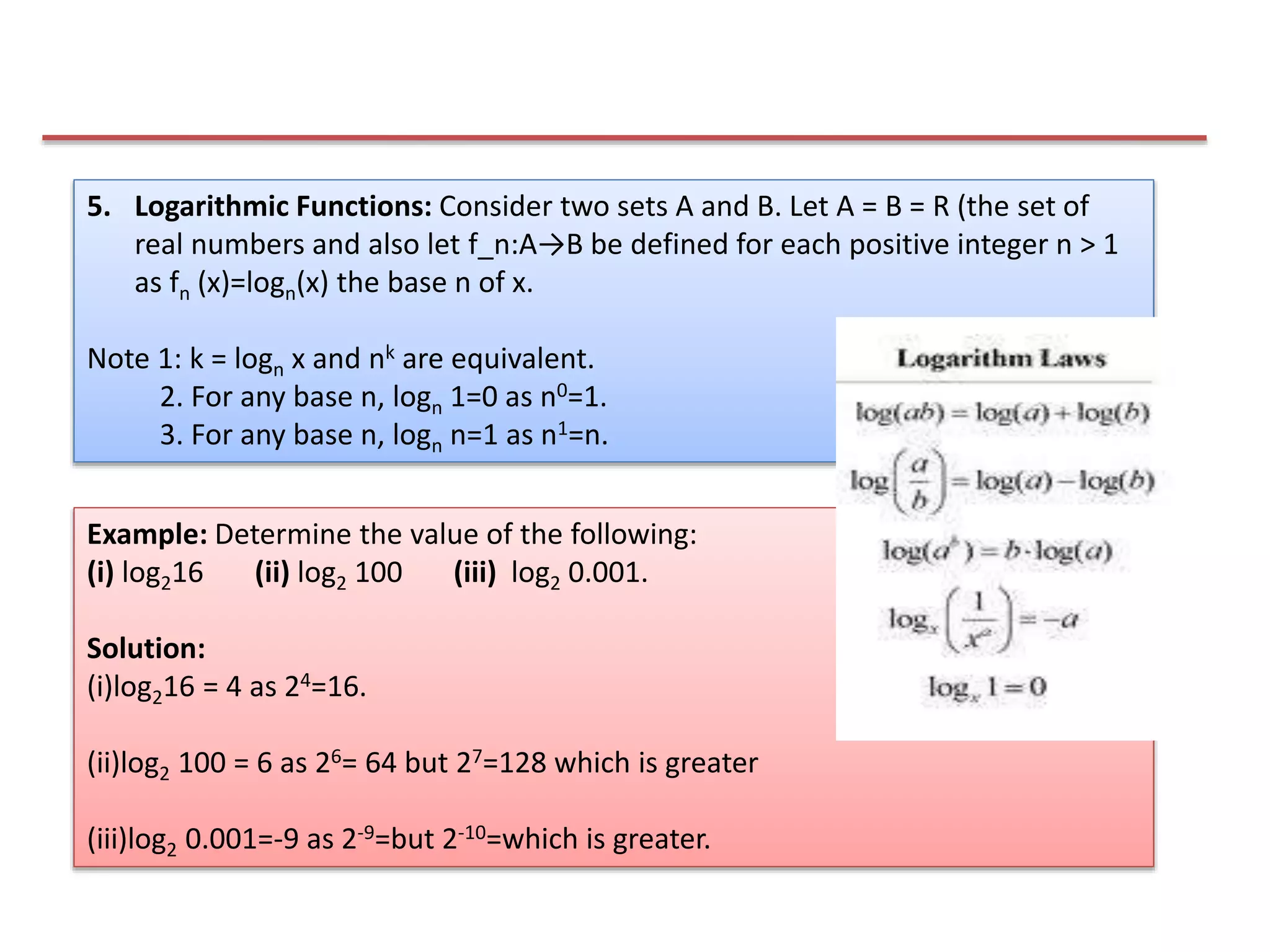
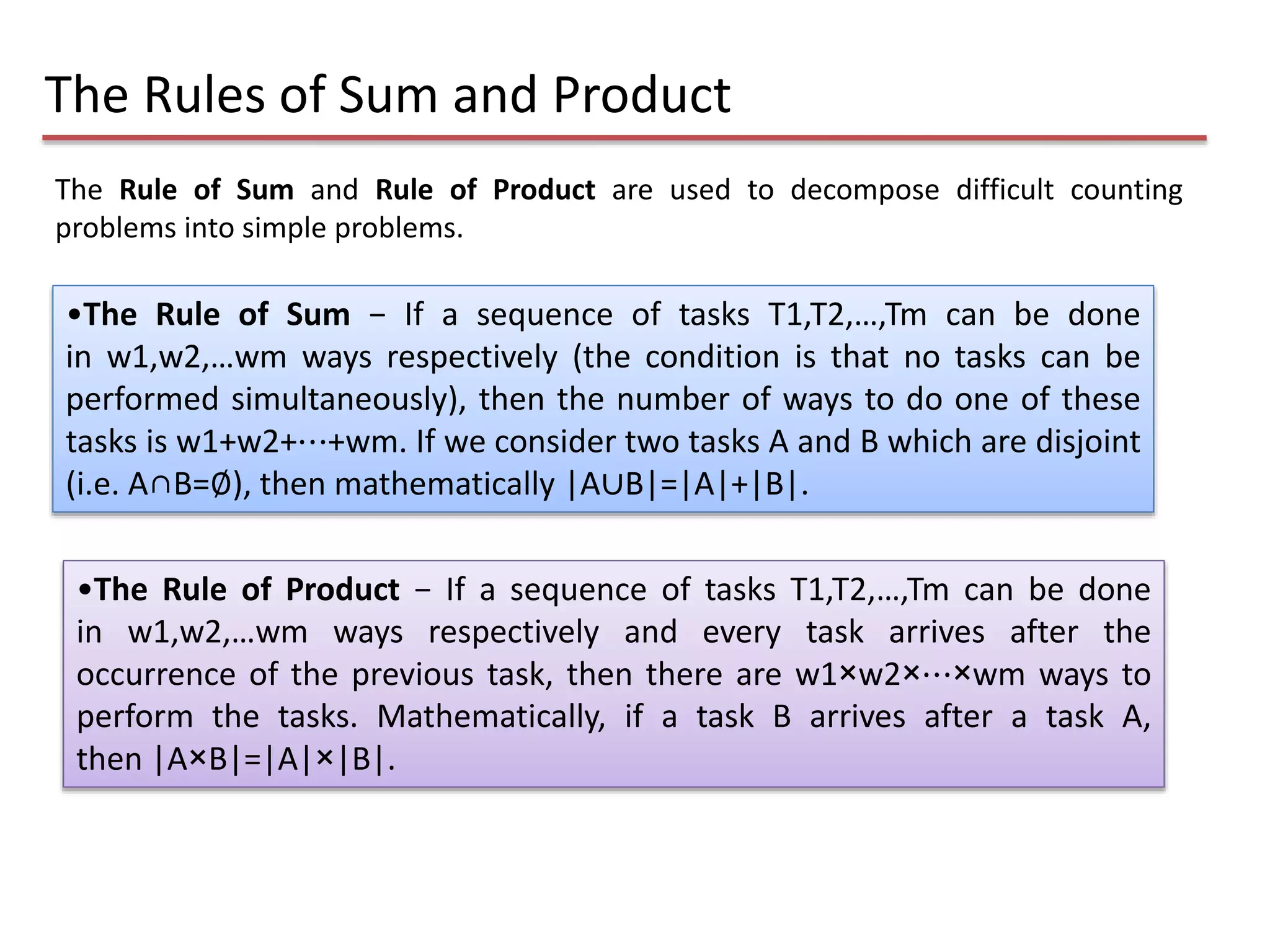
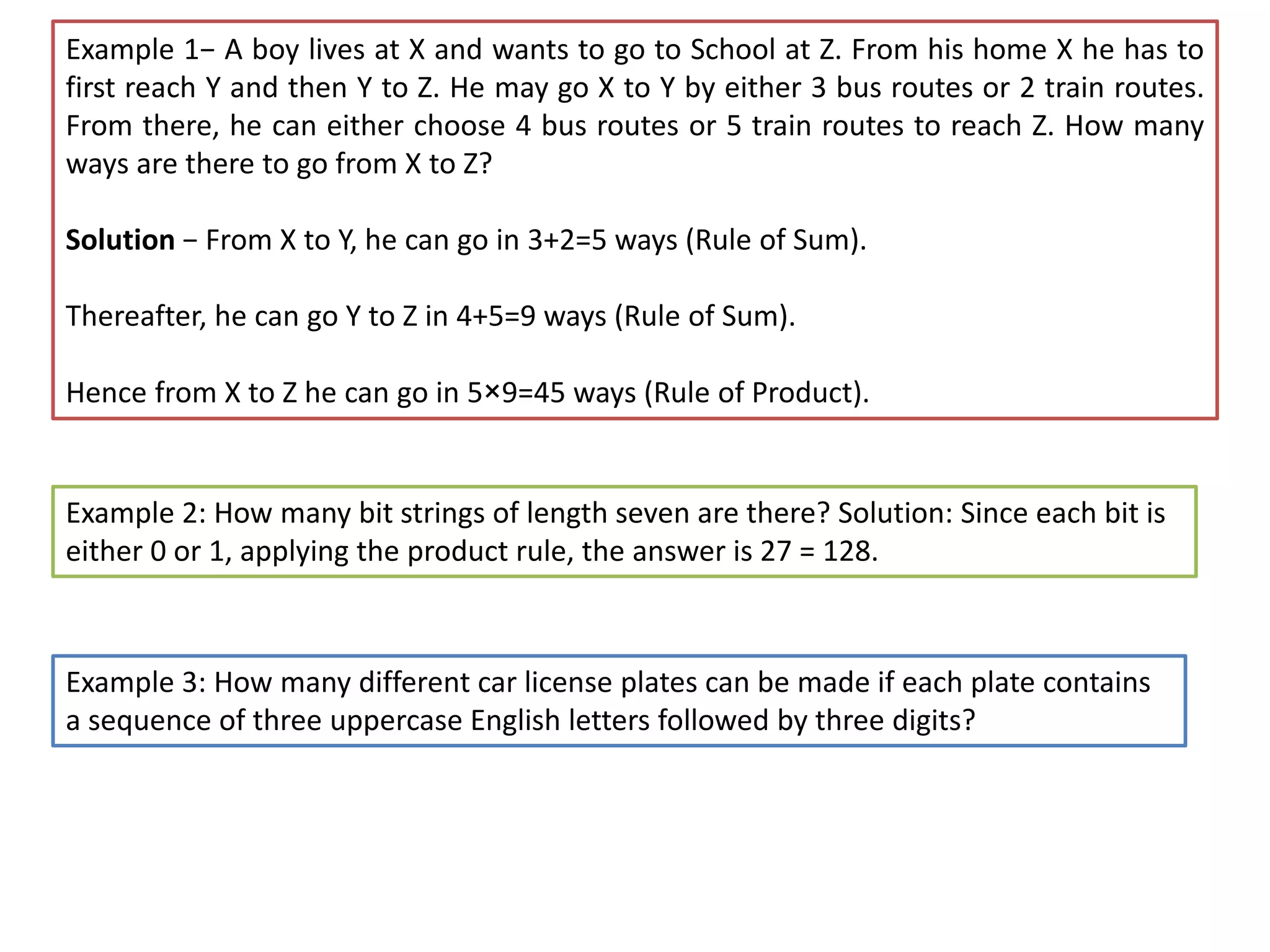
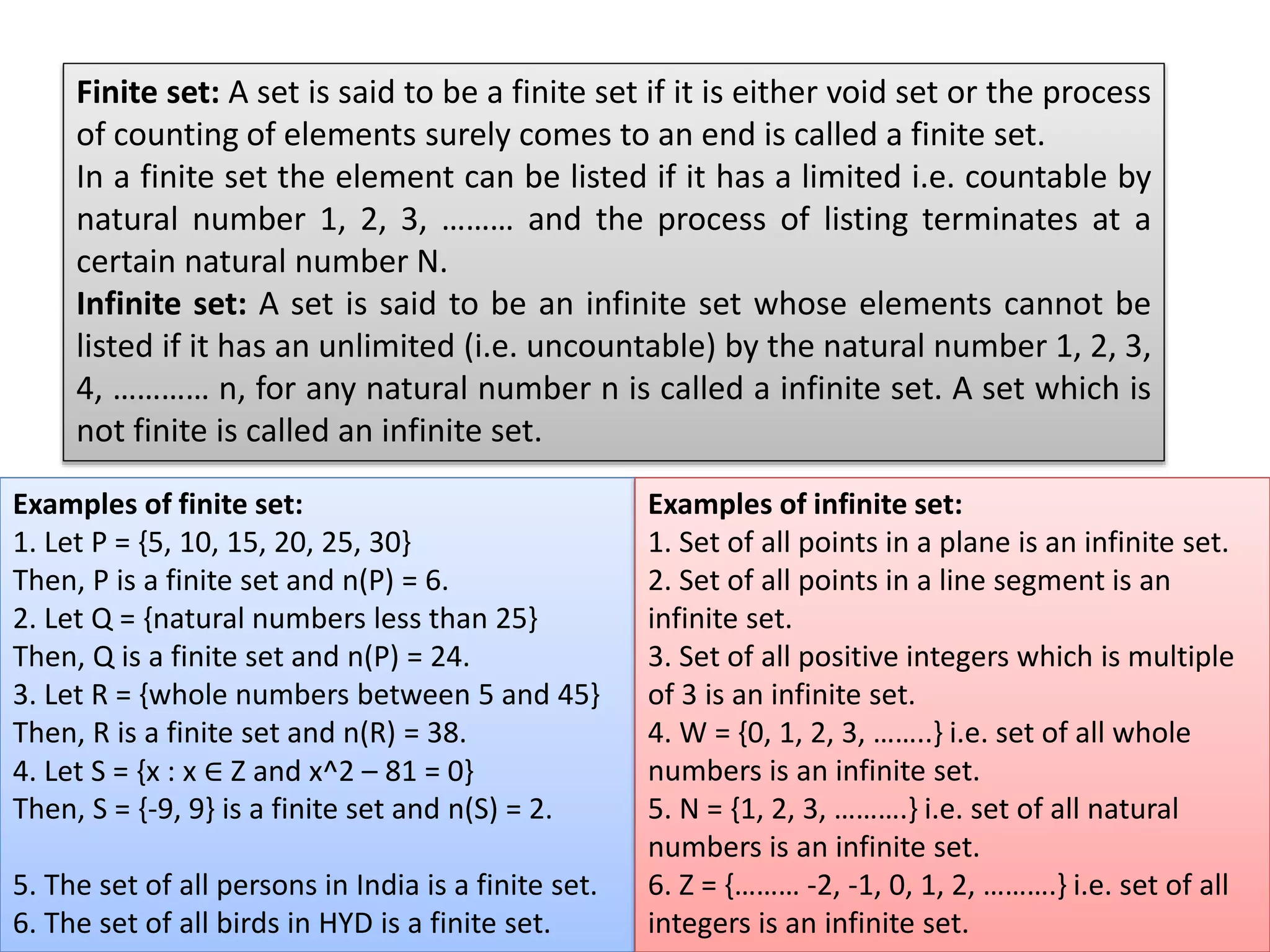
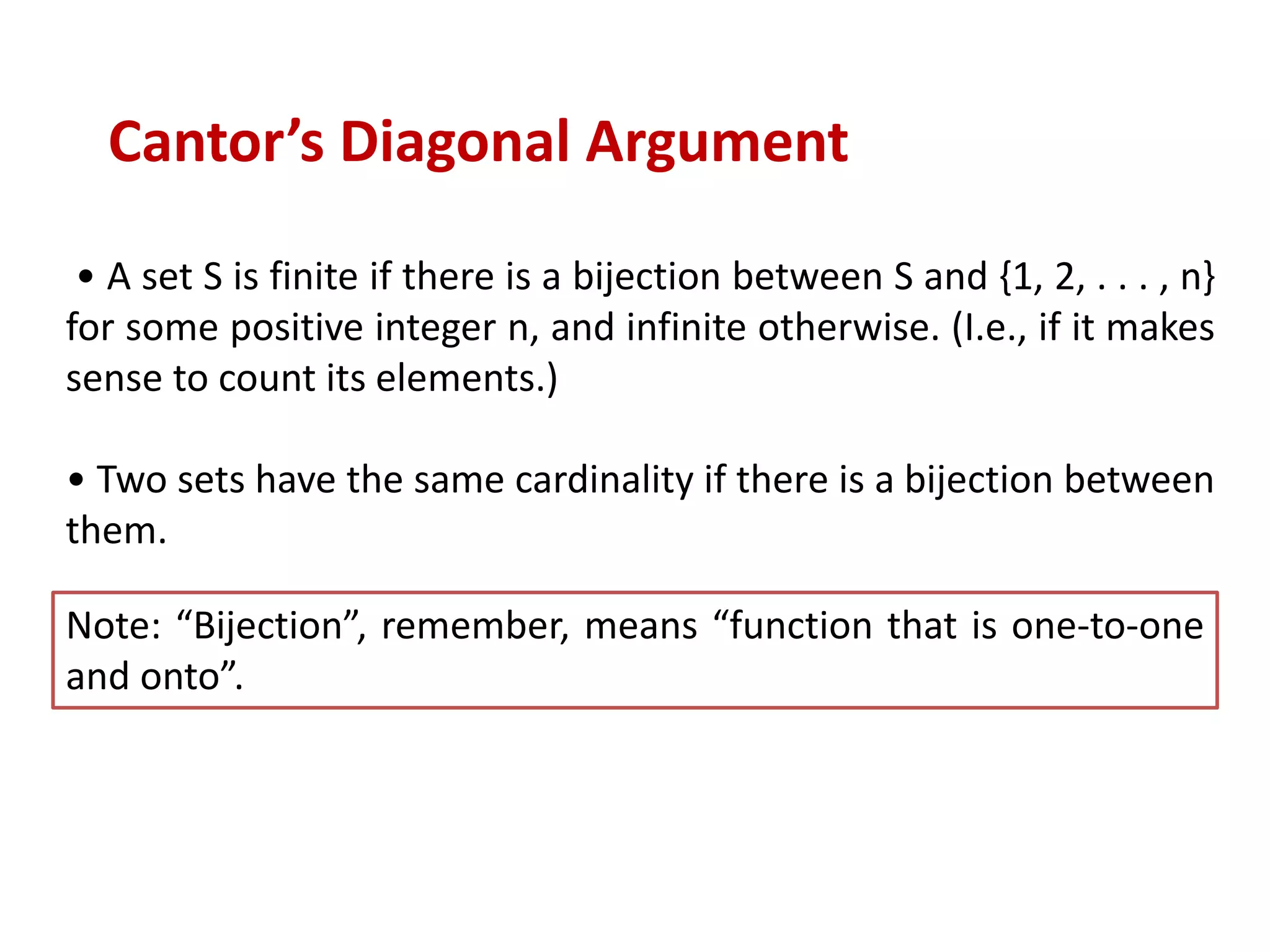
![A set S is called countably infinite if there is a bijection
between S and N.
That is, A Set is countable, because you can count it label the
elements of S. { 1, 2, . . . n} lable with N.
* NOTE: not all infinite sets are countably infinite. In fact,
there are infinitely many sizes of infinite sets.
Georg Cantor proved a approach that the set of real numbers
is not countable. That is, it is impossible to construct a
bijection between N and R.
In fact, it’s impossible to construct a bijection between N and
the interval [0, 1] (whose cardinality is the same as that of R).](https://image.slidesharecdn.com/dmiunit1-211211092101/75/Discrete-mathematic-67-2048.jpg)
![Georg Cantor proved a approach that the set of real numbers
is not countable. That is, it is impossible to construct a
bijection between N and R.
In fact, it’s impossible to construct a bijection between N and
the interval [0, 1] (whose cardinality is the same as that of R).](https://image.slidesharecdn.com/dmiunit1-211211092101/75/Discrete-mathematic-68-2048.jpg)
![Cantor’s proof: Suppose that f : N → [0, 1] is any function.](https://image.slidesharecdn.com/dmiunit1-211211092101/75/Discrete-mathematic-69-2048.jpg)
